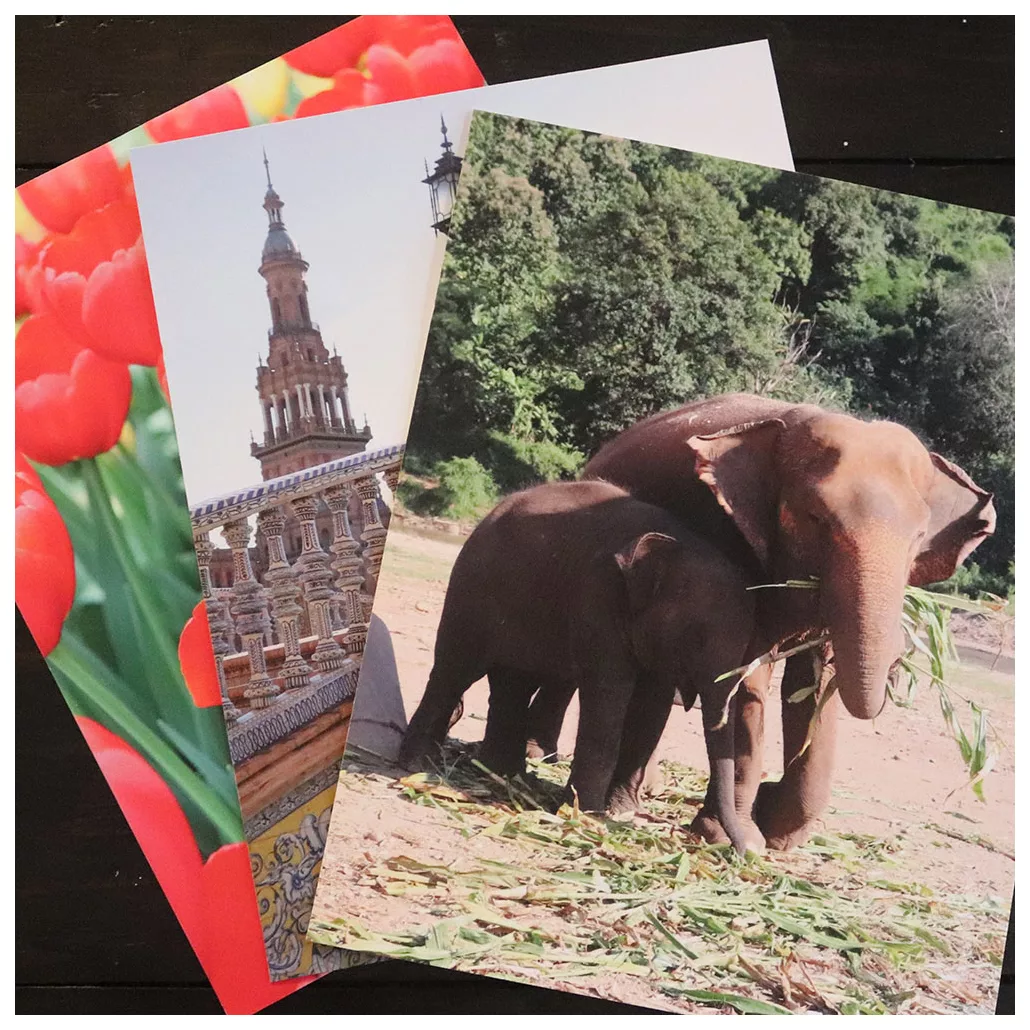Exploring Medieval Tomar and its Stunning Catholic Convent
Last updated on April 14, 2025
Honestly, my day trip to Tomar was very last minute and I didn’t know much about it before visiting. I was looking for a small medieval town to see and it fit the bill. I have to say, it made a very nice day out and the convent was, of course, the main highlight of the day.
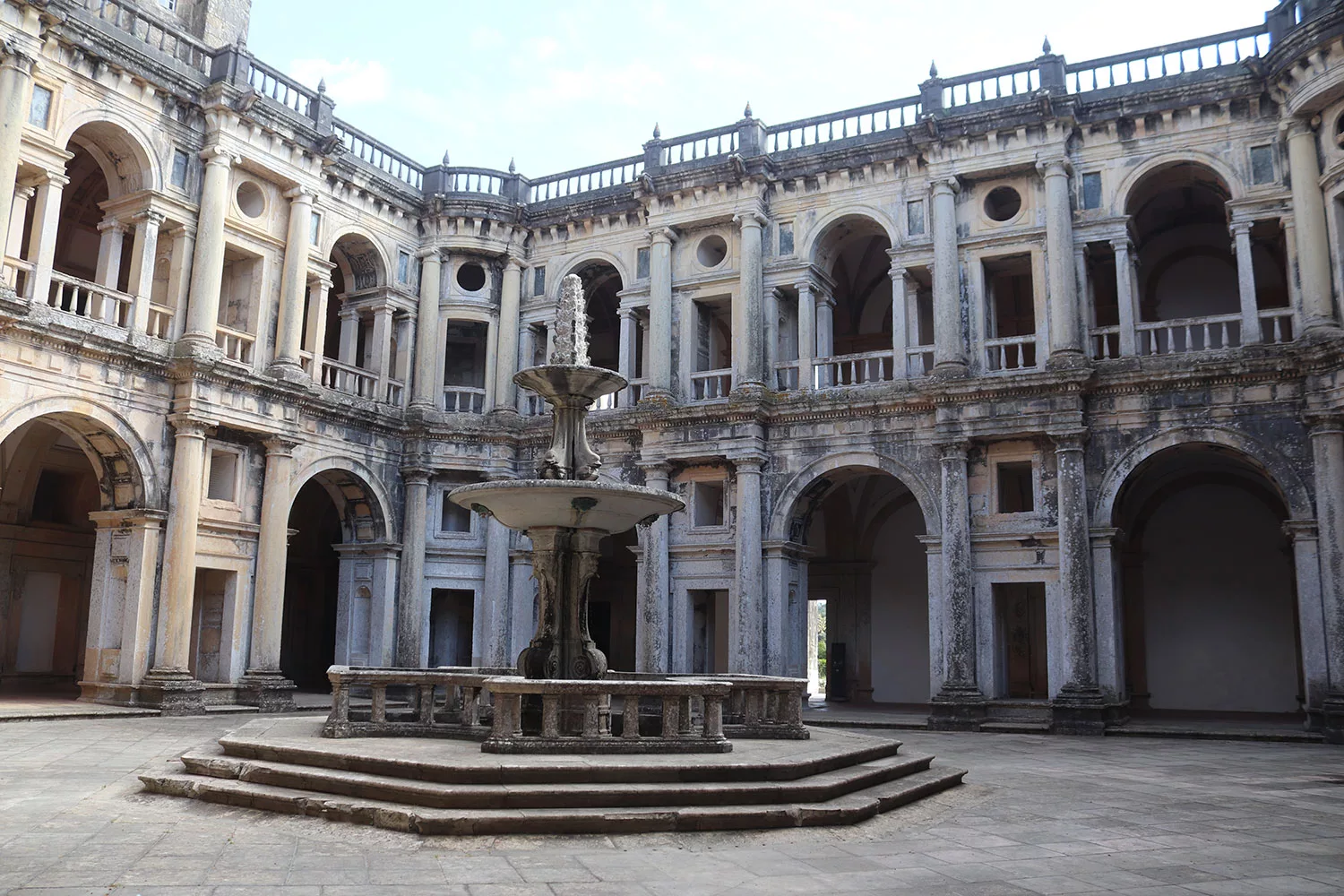
The Knights Templar in Tomar
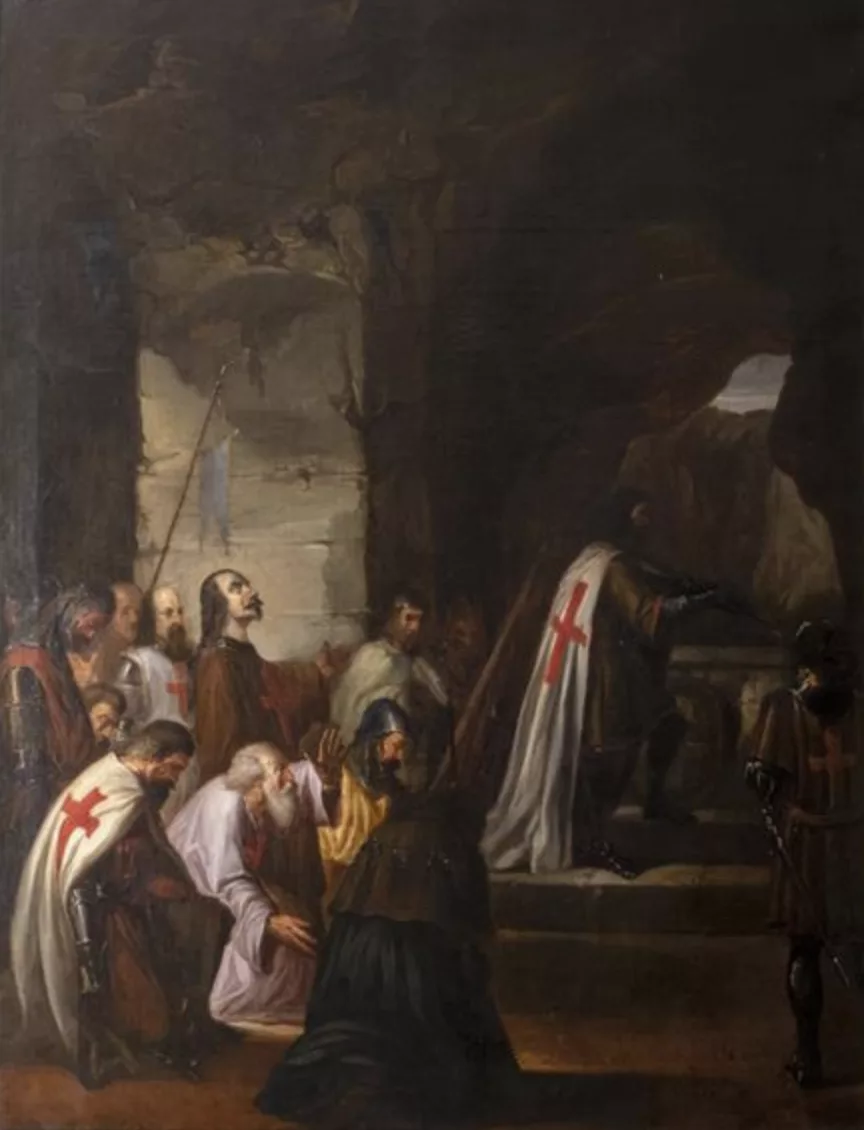
Templarios by José María Rodríguez de Losada, 1826
We talk a lot about the Crusades but there were normal, everyday Christians during this time that tried to make pilgrimages to Jerusalem, as well. The Templar Order (or “Poor Knights of Christ”) was founded in 1118 by the French knight Hugh de Payens to help protect these everyday Christians on their pilgrimages. They thrived for almost 200 years and had many strongholds across Europe and the Middle East, including one in Tomar. Portugal was still in the process of reclaiming its Christianity and expelling the Moorish invaders.
Of course European powers eventually lost control of Jerusalem and Palestine in the late 13th, early 14th centuries, so the Knights Templar weren’t needed as much. Eventually it got to the point where King Philip IV of France was in debt to the Order and pulled out the “this is a satanic gay club” rumor to have members of the Order arrested and executed which, interestingly, got rid of the King’s debt. Of course the whole anti-Christ and homosexual rumors were probably false, though there were some corruption rumors I wouldn’t completely write off without hearing more of.
Anyway, the Templar Grand Master Jacques de Molay was burned at the stake in 1314 and that marks the official end of the Knights Templar. The Order of Christ was created in 1319 in Portugal for survivors of the Order. In 1357, Tomar became the seat of the Order of Christ and the convent was expanded and renovated through the 16th century. The Order of Christ was disbanded in 1834.
What’s with all the Crosses in Tomar?
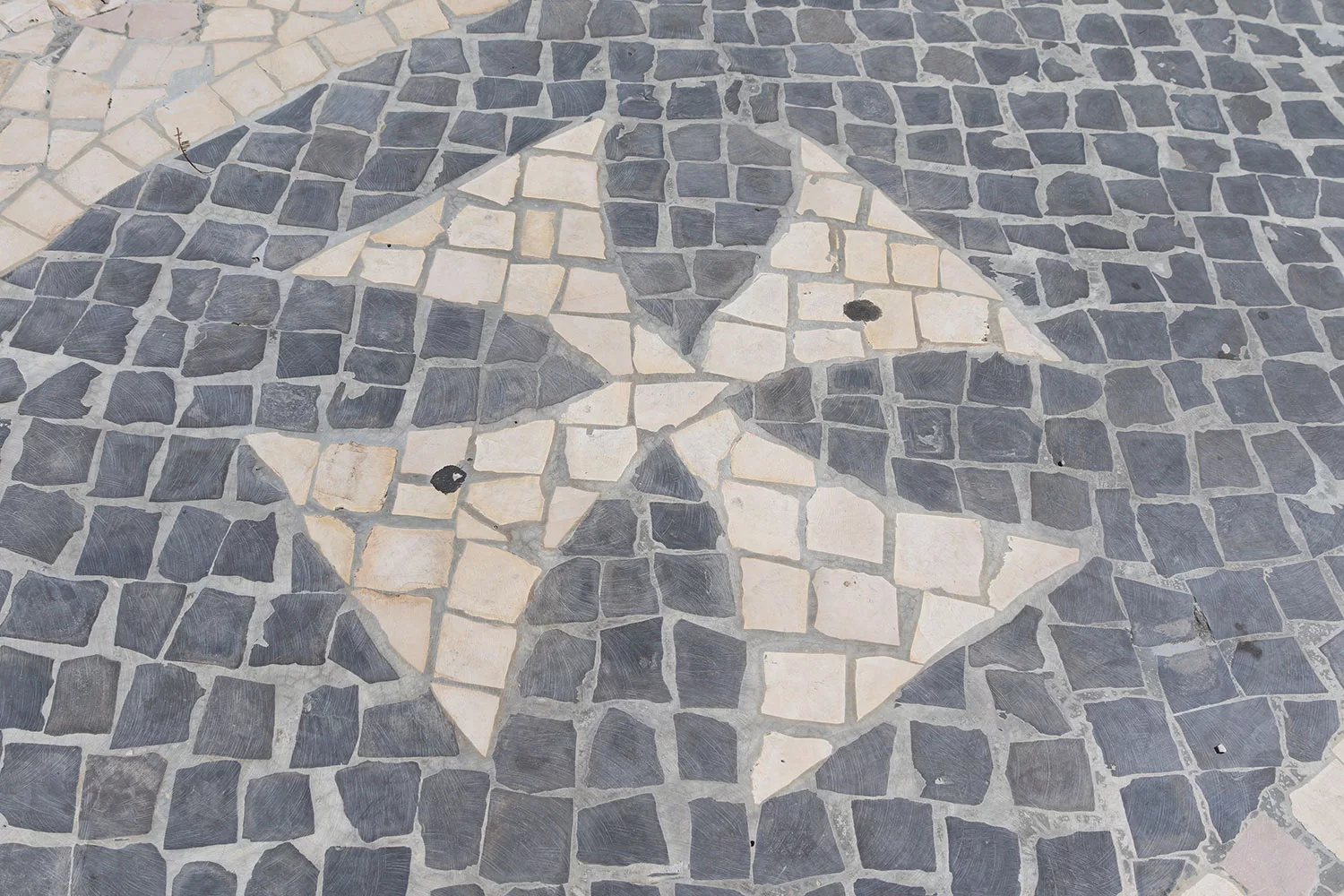
This is simply the Templar Cross or the Cross of Gules, a cross pattée. The Knights of Templar started wearing it on their clothes in 1147 and it was always red to symbolise blood, the clothes usually white to symbolise purity.
You will see these crosses everywhere in Tomar – from the design on the sidewalks to the shapes of fountains and even to the decoration of pastries.
Convent of Christ in Tomar
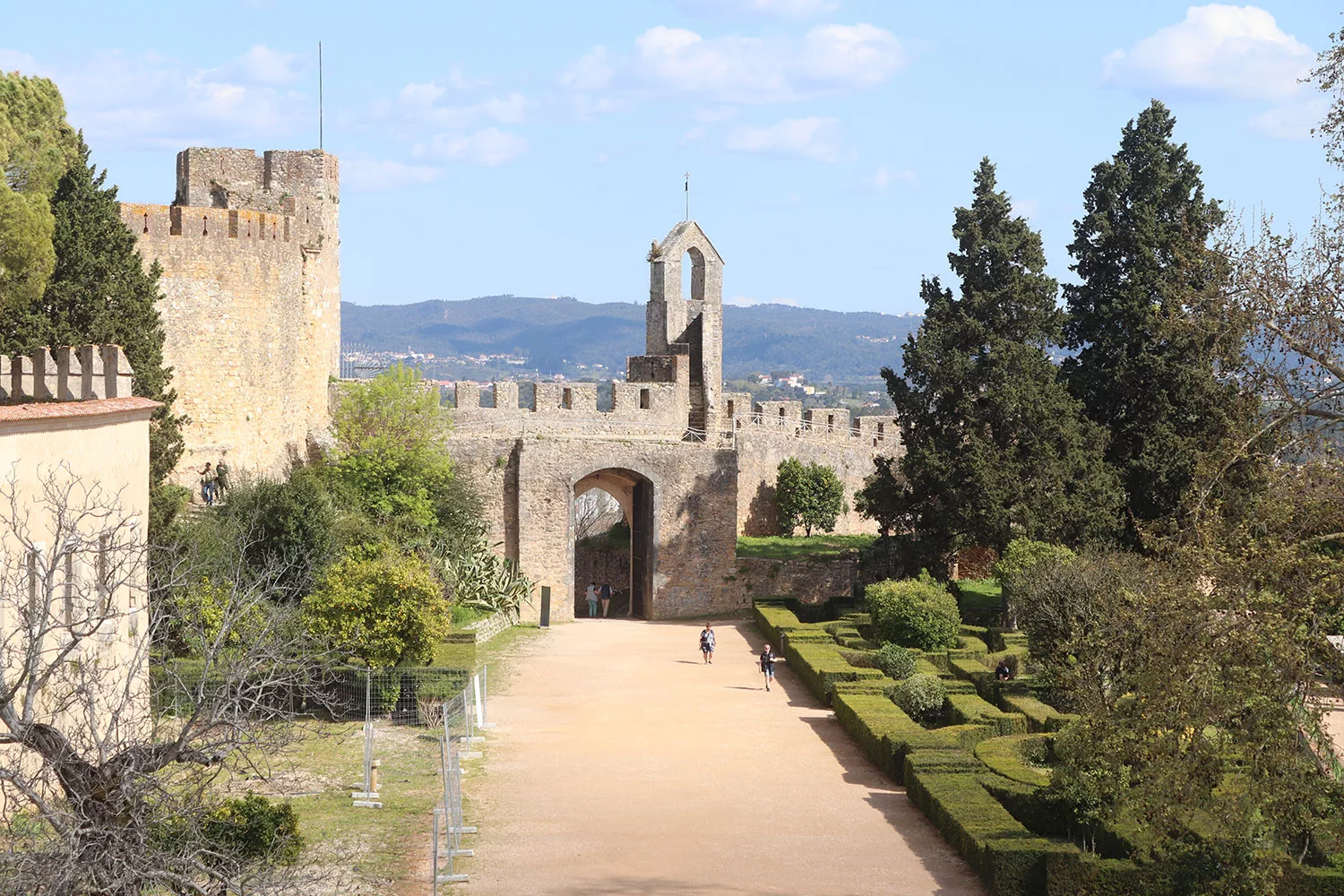
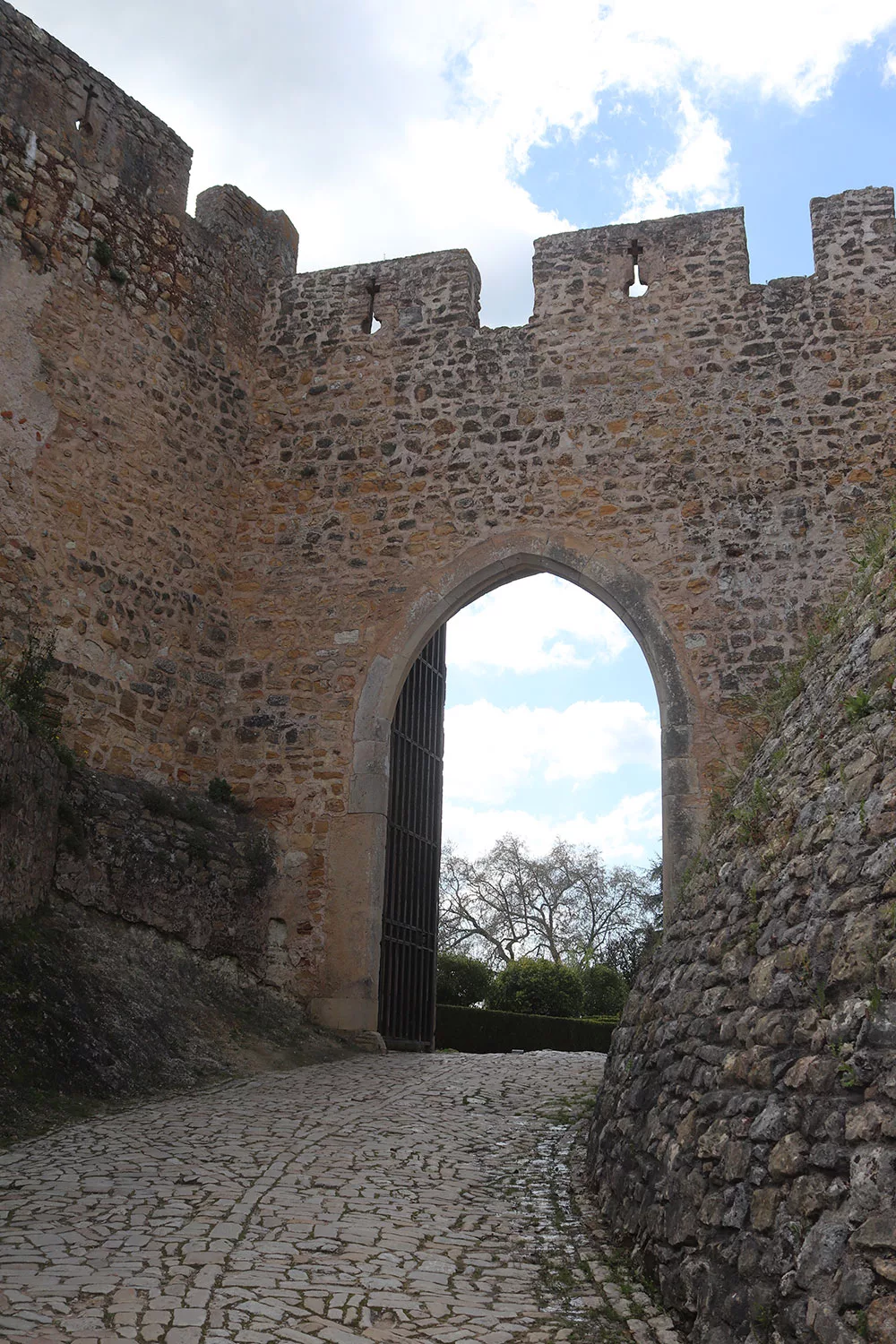

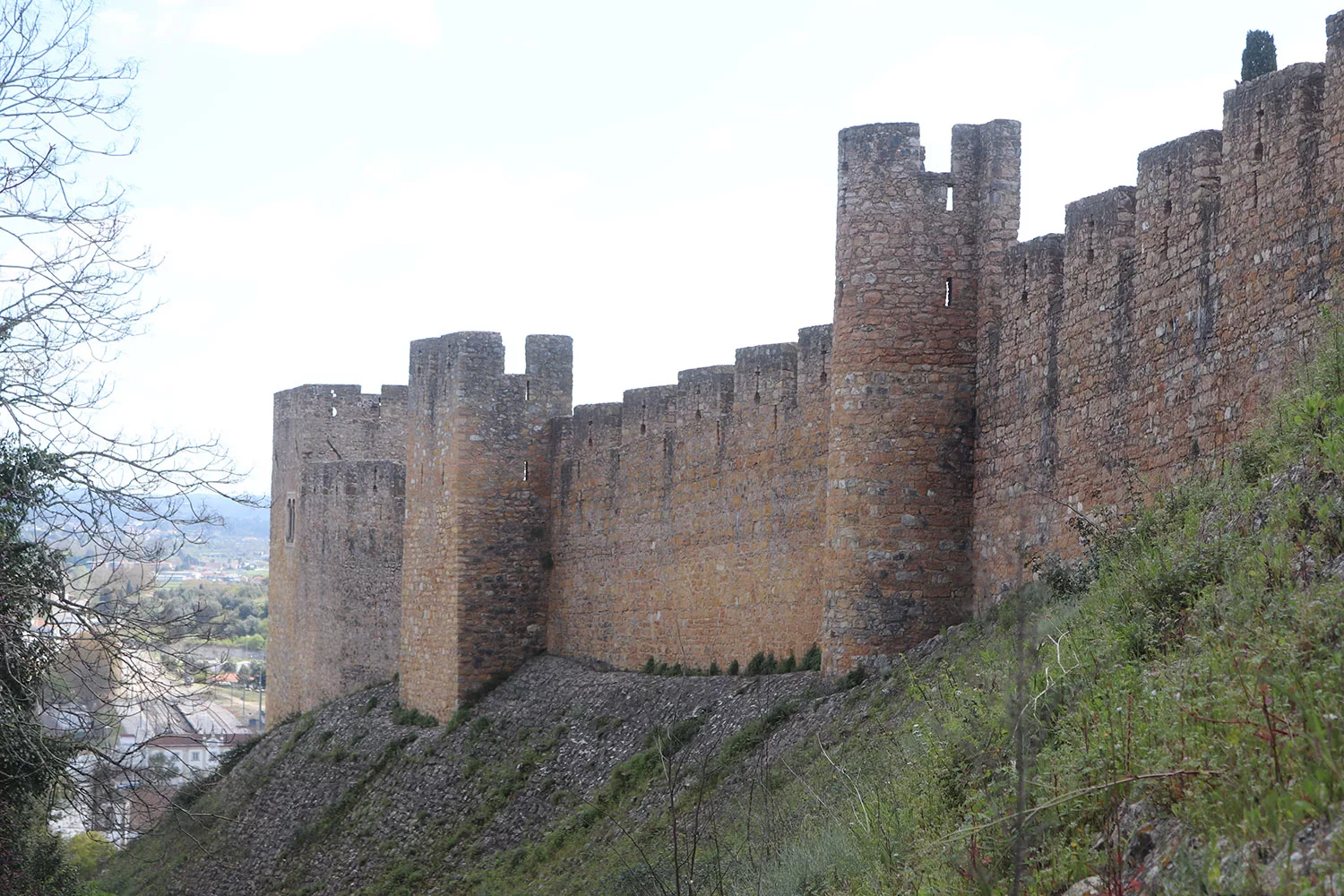
When you arrive at the convent, you can go to the left which will take you up to the Castle, which is free to explore. The castle is a ruin but you can wander around its impressive walls and the beautiful large garden it now has. You’ll also be able to get up close to the beautiful south portal of the convent.
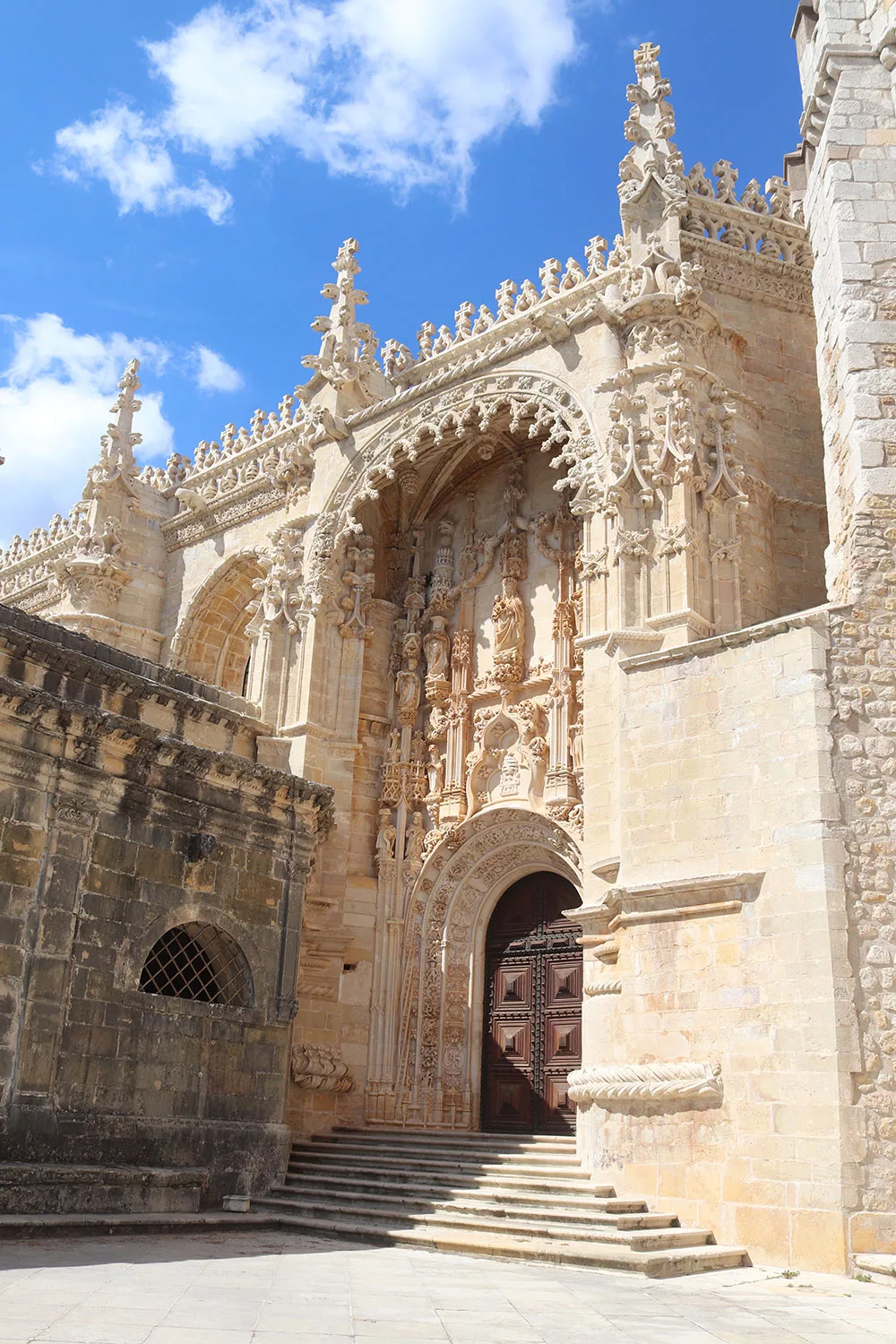
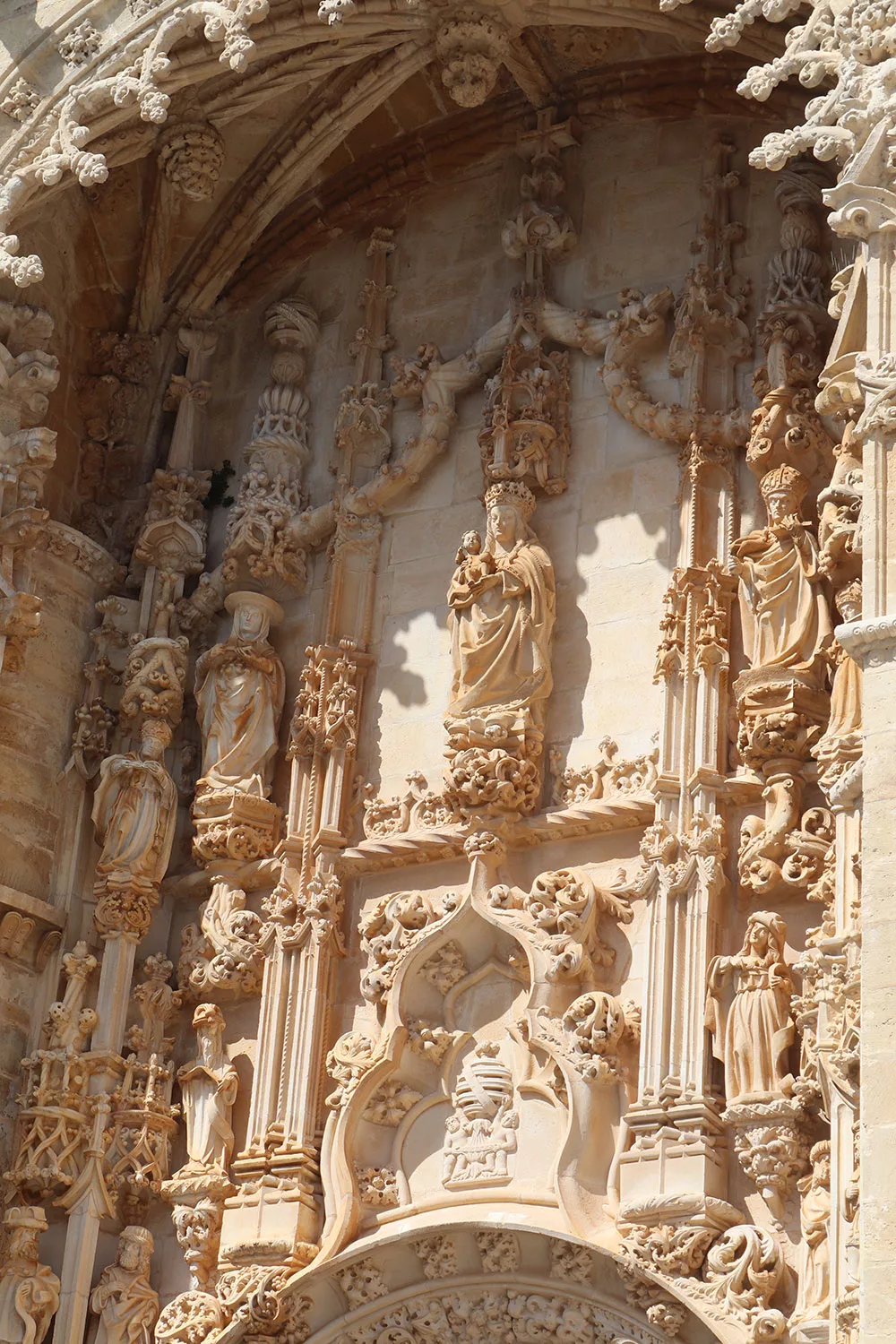
The convent is very beautiful but it’s also humungous. There are multiple stories and cloisters to explore. I tend to travel fairly quickly but an hour is probably the bare minimum you’ll spend in this place. Since there are so many corridors, it can be easy to get lost or miss things, so make sure you take note of the rooms to see and the rooms you have seen.
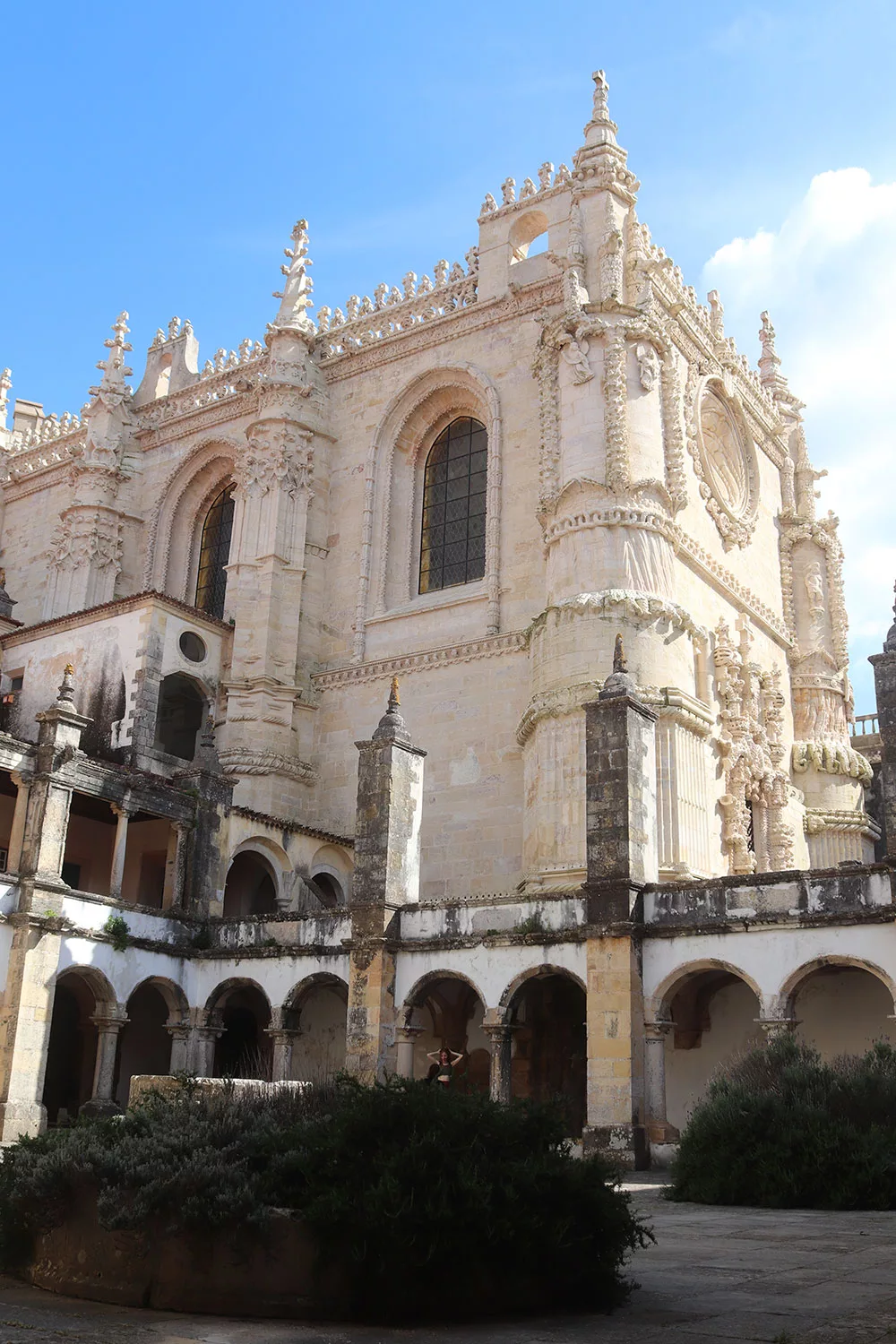
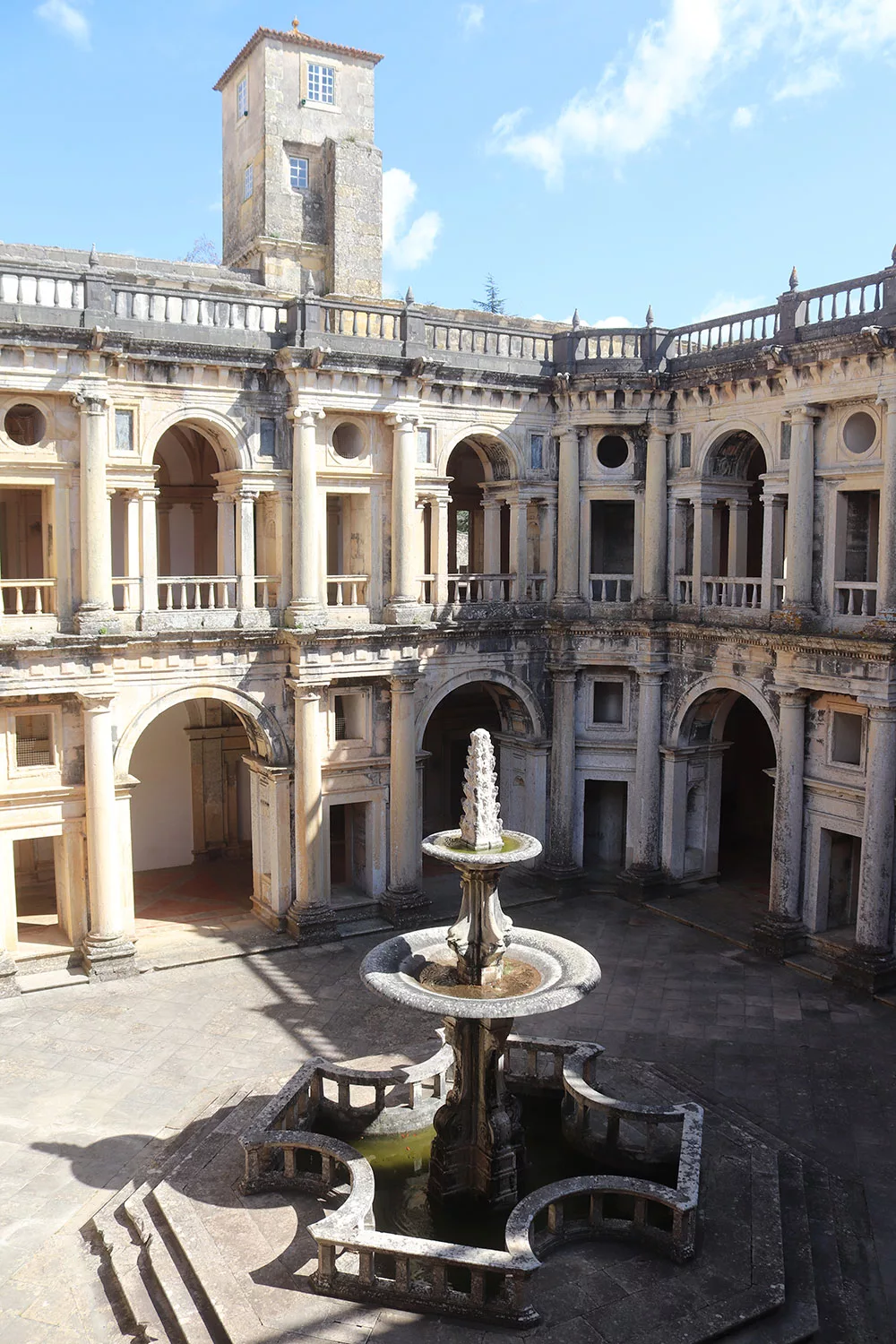
What’s great about the convent is they have a panel in each room with a map showing you where you are, plus a blurb on the history and function of the room you’re in. You’ll notice that the areas have very different architectural styles, from the manueline to mannerist, which reflects the rich history and evolution the convent’s had over hundreds of years.

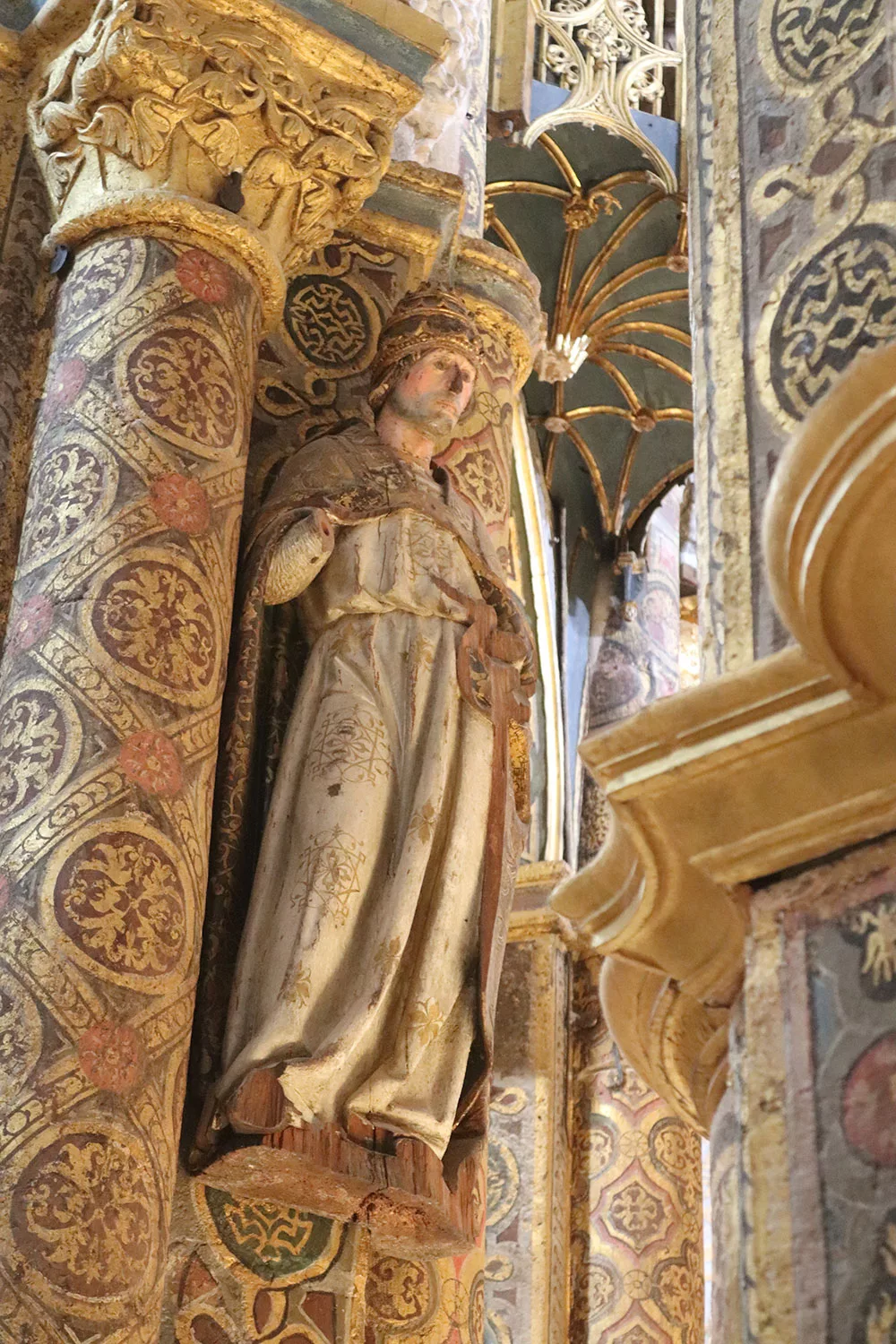
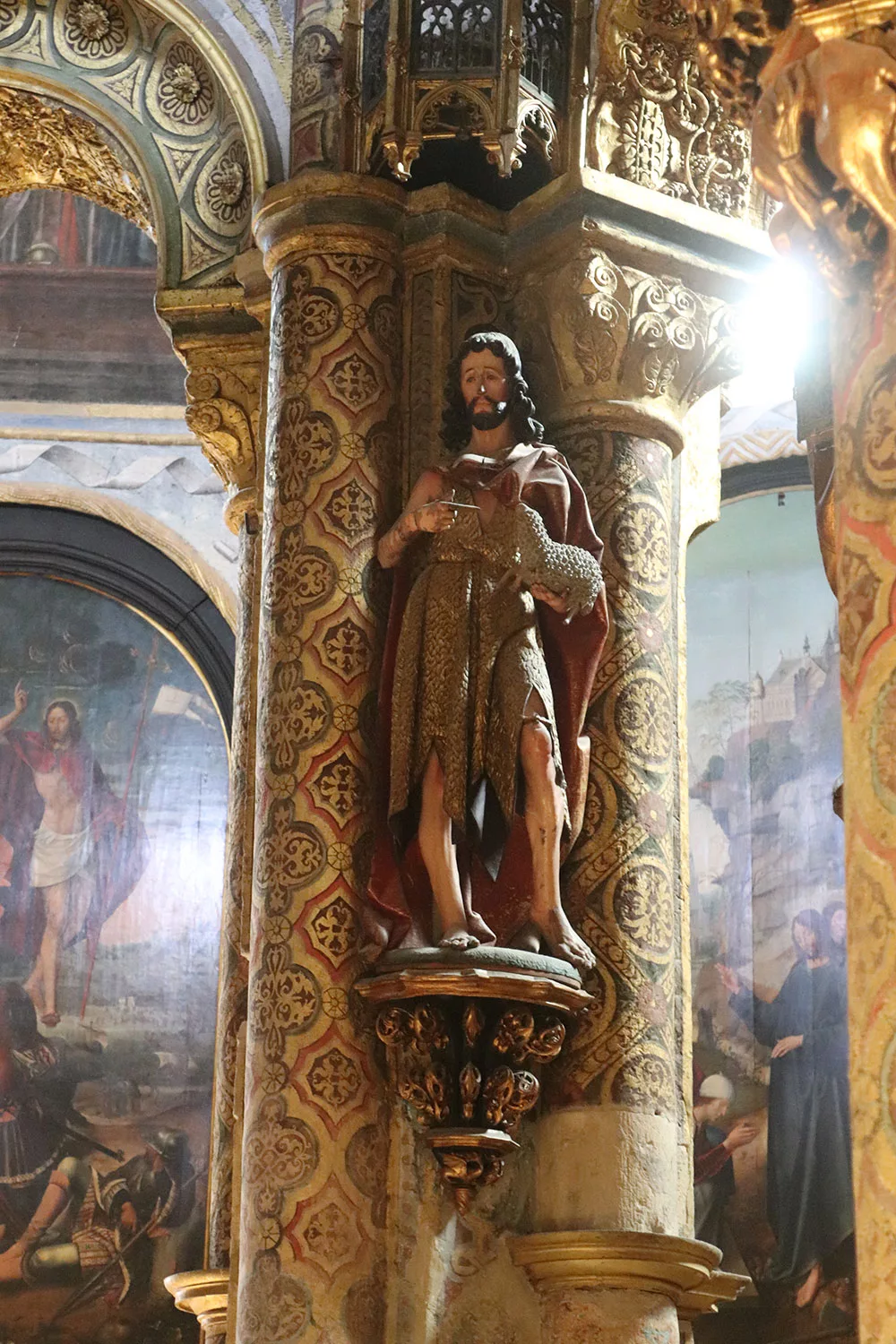
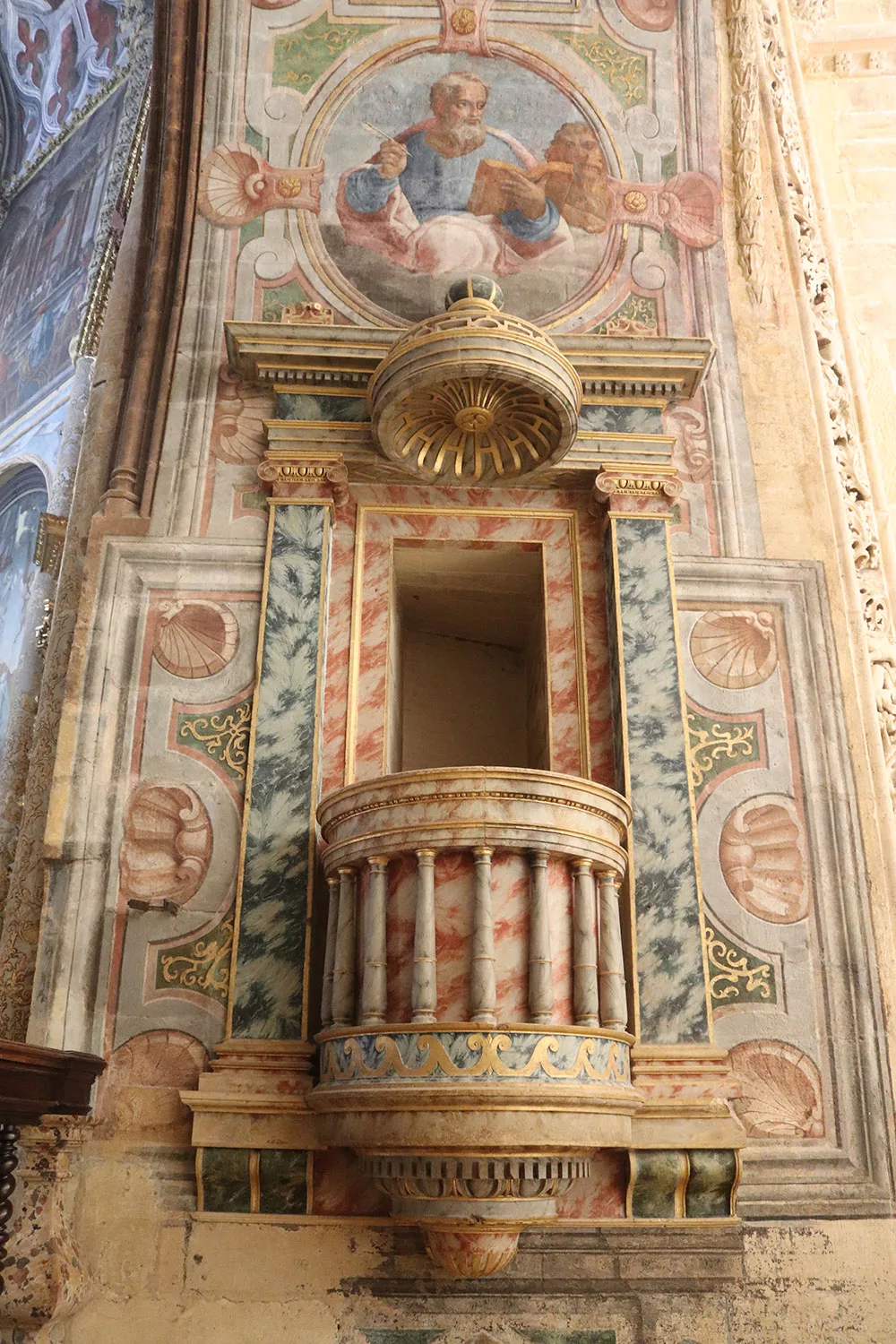

I think my favorite part was – unsurprisingly – the romanesque church or Charola. It dates all the way back to the 12th century though the interior was completed in the 16th century. It’s easy to see why – the amazing detail and painting. You can’t go inside the interior rotunda but there are beautiful carved figured, painted designs all over the walls and the columns and the ceiling. It is really magnificent.

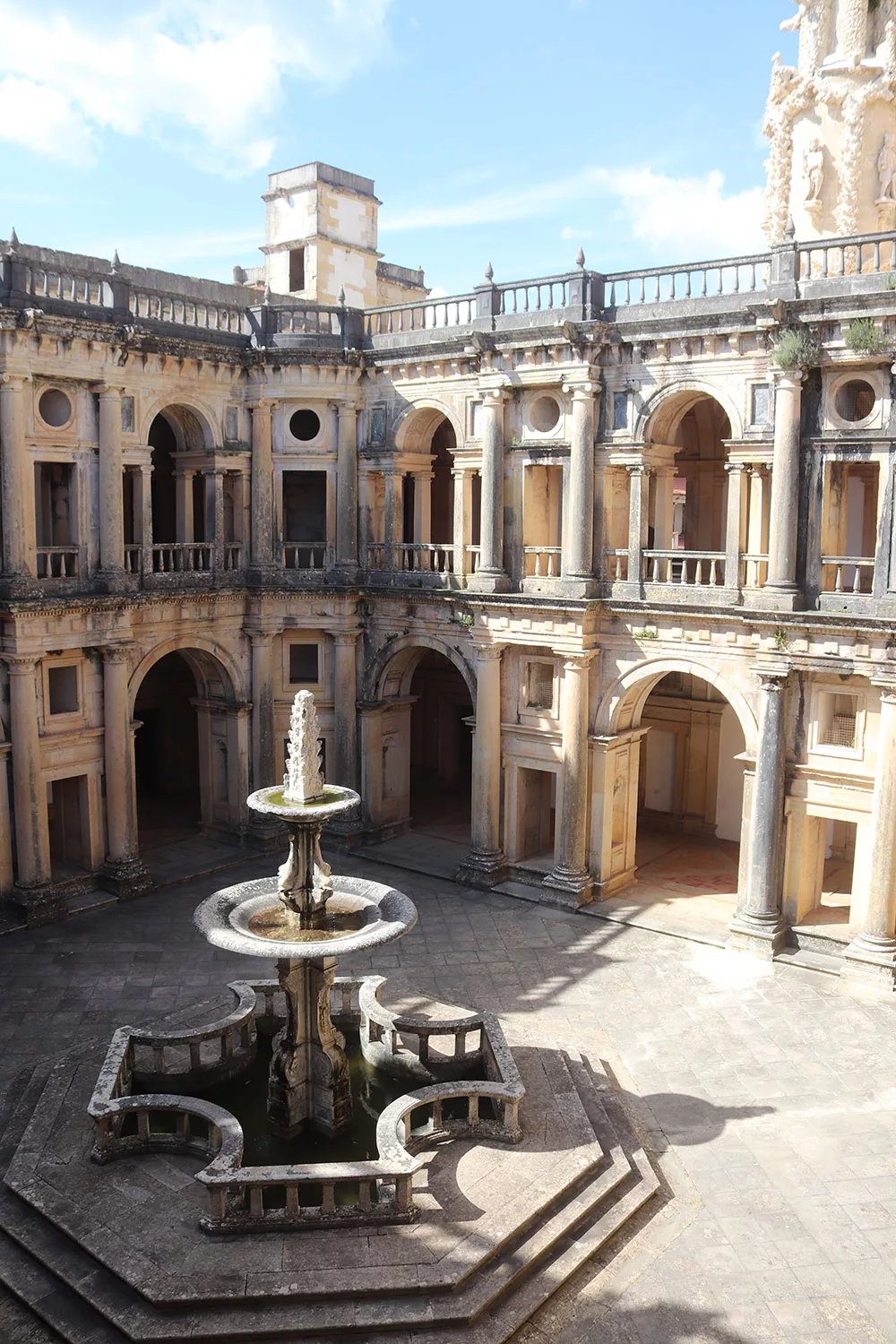


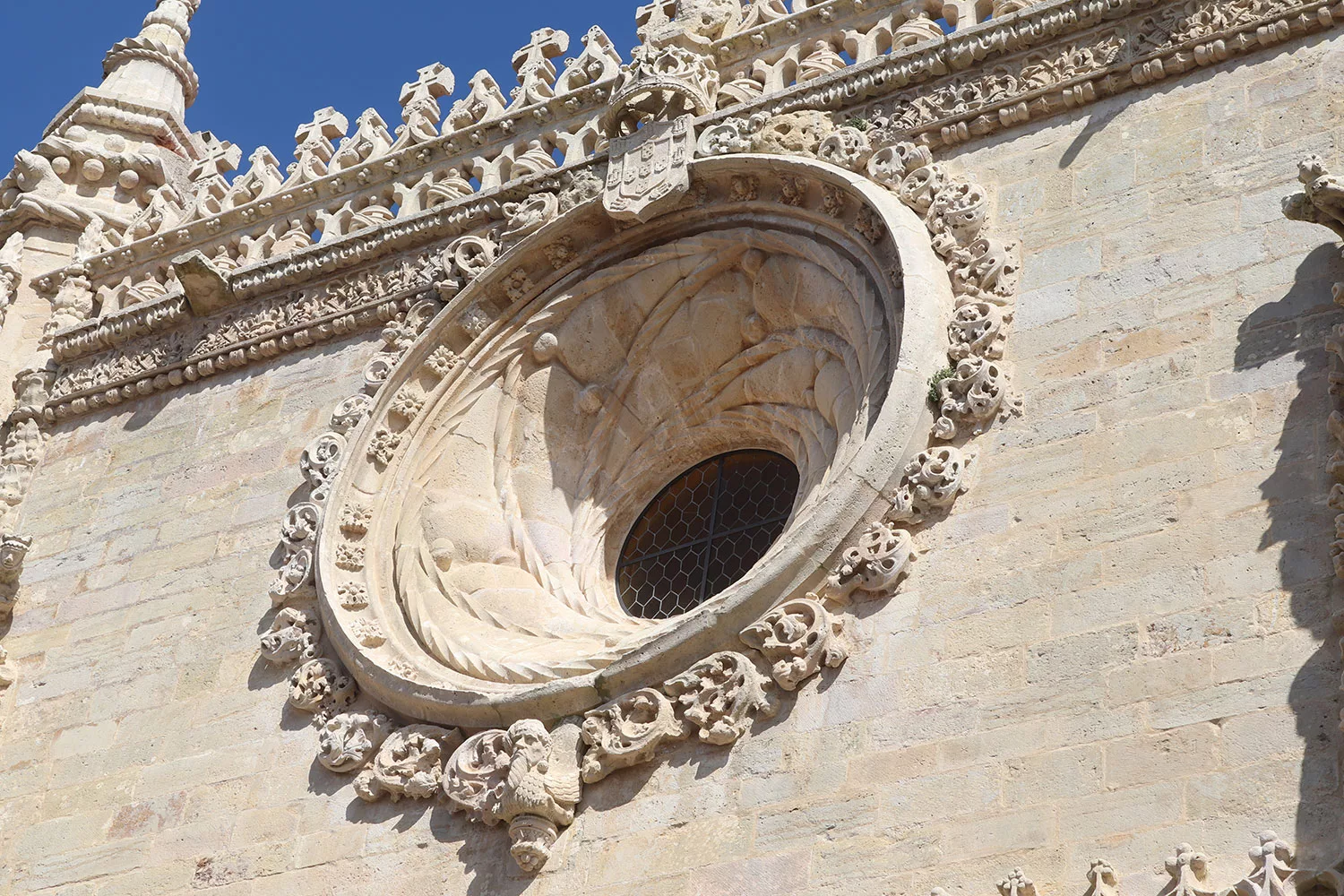
Then you have lots of other cloisters and viewpoints to explore. The Cloister of the Cemetery, Cloister of the Crows, Saint Barbara’s Cloister, Cloister of John III, and a few more. They loved cloisters so much that even their bathroom was in the form of a small cloister! You’ll also get to see the beautiful Chapter House window, the ruined chapter house, the kitchen, some small but decorative chapels, and have the option to go to the top of a cloister to get up close with the stone carving. There’s a lot to explore.
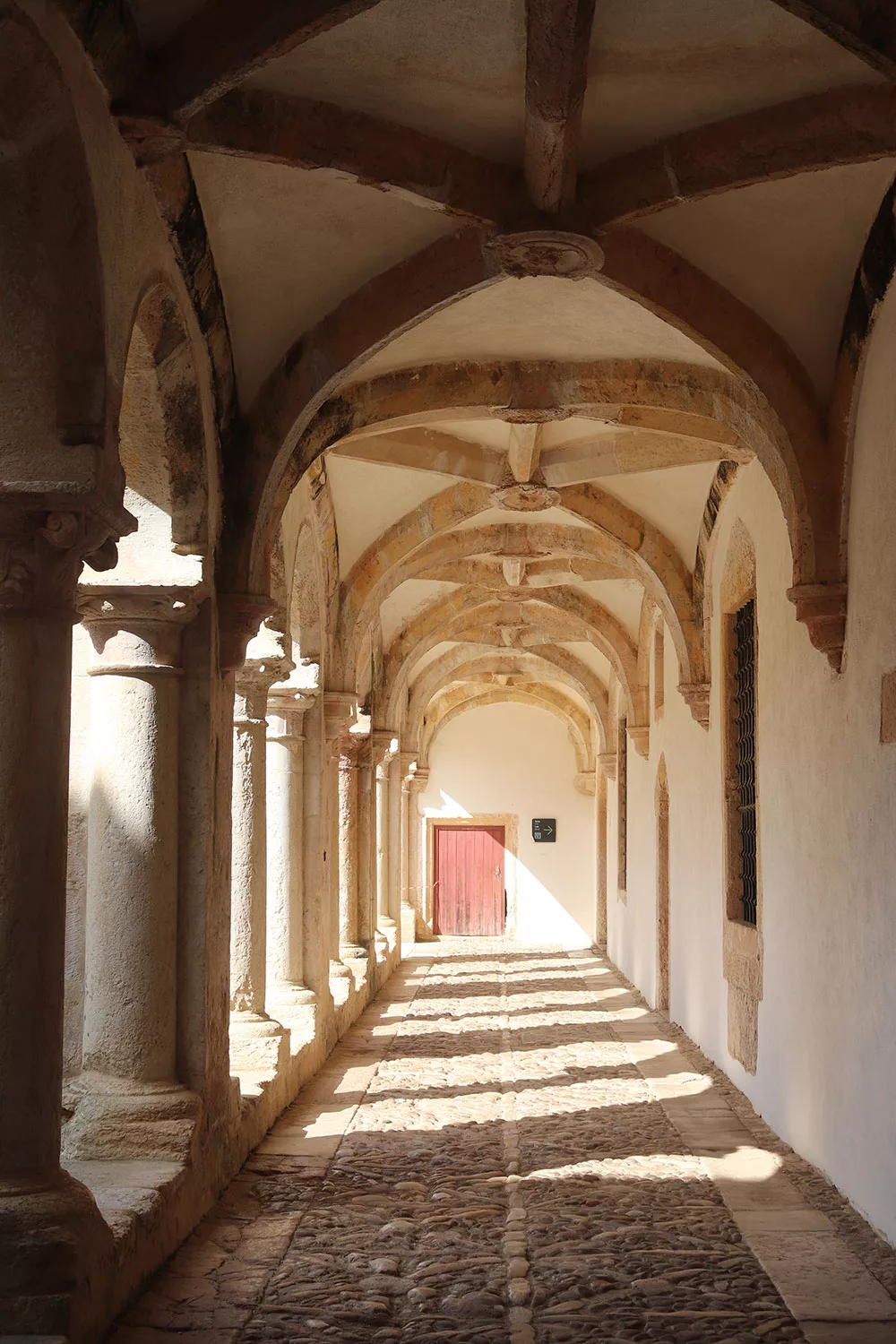


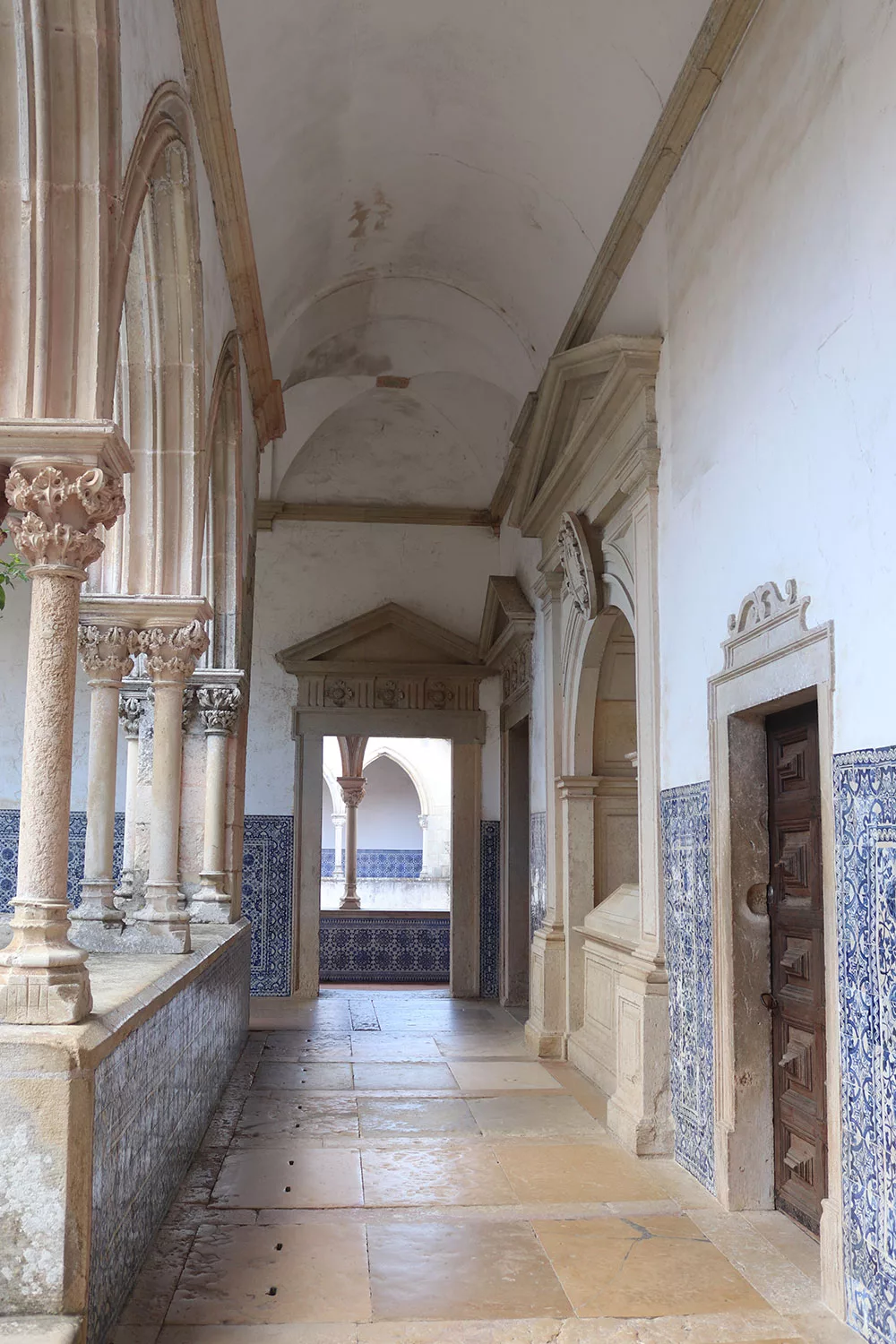
I think my second favorite part of the convent was seeing the dormitories. What I really loved was being able to see how people actually lived in a convent, and see better what their day to day life probably looked like. The convent is almost completely devoid of furniture but with the dormitory, the kitchen, the washroom cloister, etc. the picture of how someone would live there and what they would see on a daily basis becomes clearer. I really loved that.
For comparison, Jeronimos Monastery in Lisbon is very beautiful but it’s just the cloister you can see. At the Convent of Christ in Tomar, there’s no room left unexplored so you can see a bit “behind the scenes” of the lives of the people who lived there. (It also has the bonus of being a lot less crowded!)

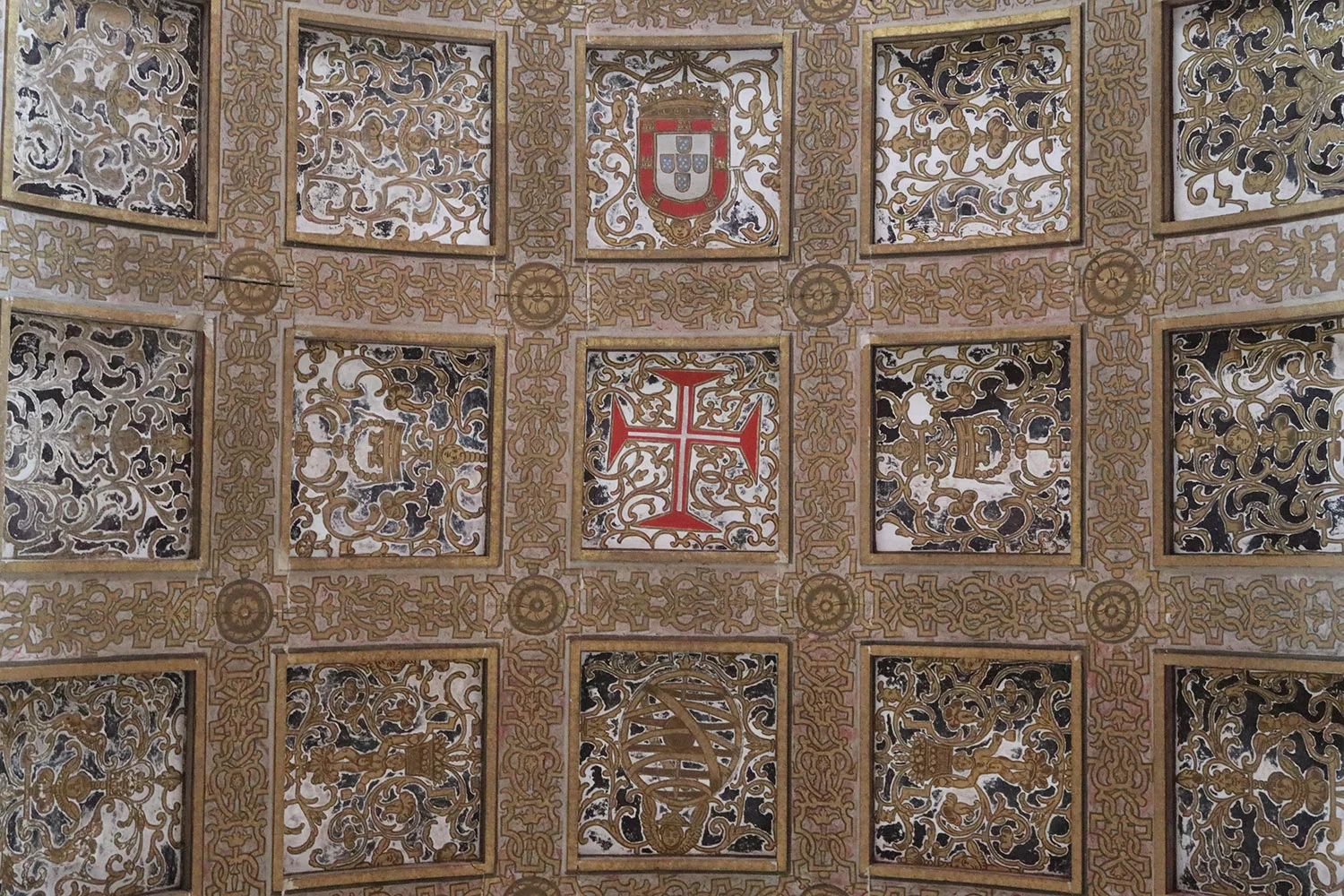
You can’t visit Tomar without seeing its star, the convent. But it really is a magnificent place and history lovers particularly will probably love it.
There may be a bus/shuttle up to the convent. When I arrived by train, there was a red shuttle outside the train station that I think went up to the convent. I didn’t go to the convent first so I didn’t take the shuttle, but it was a steep, strenuous walk up the hill to the convent. If you don’t have a car, I recommend looking into the shuttle at the station because I couldn’t and can’t find any information about it online.
Other Things to Do in Tomar


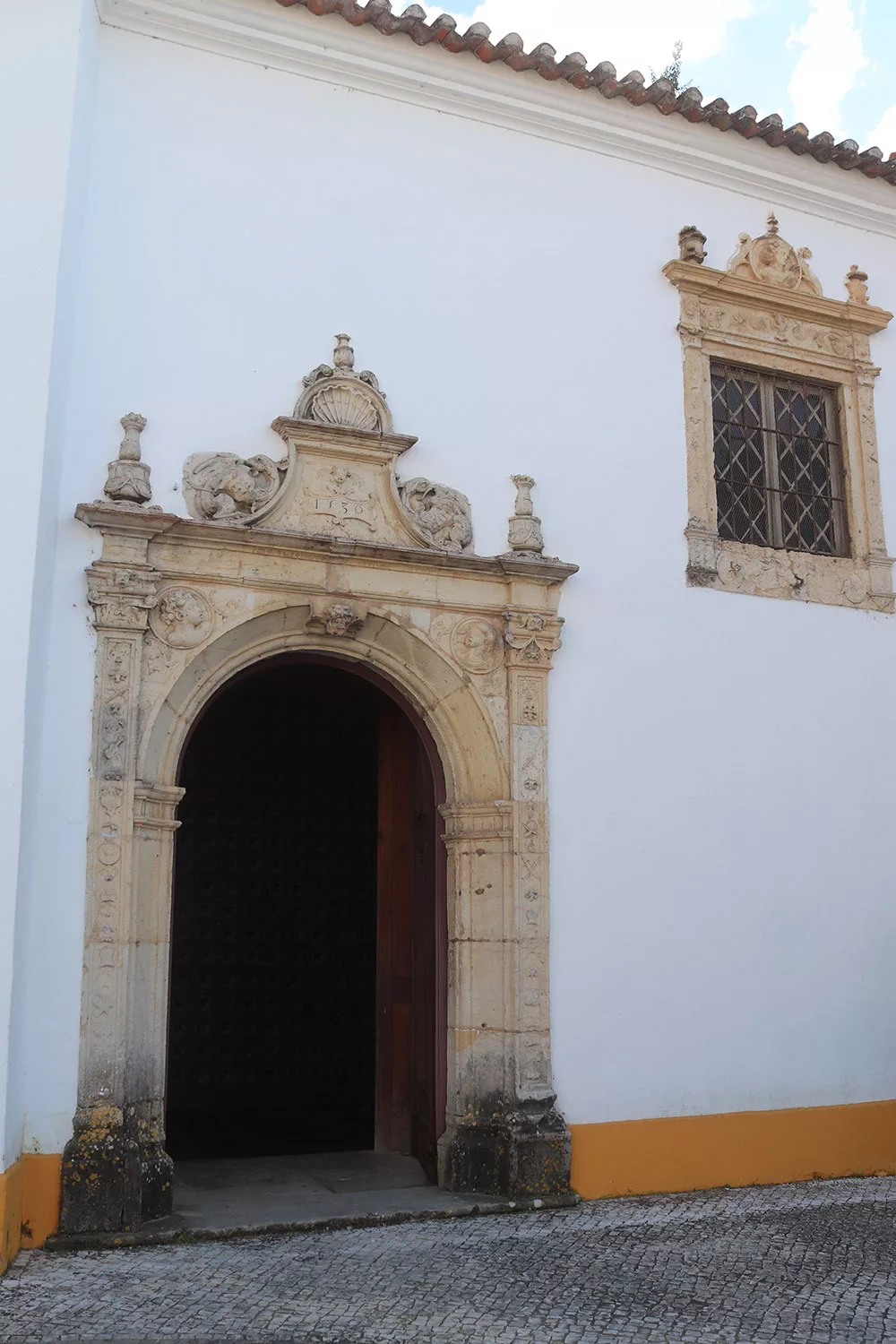

Of course there are several churches to be seen, as well. You’ll have to see the beautiful Republica Square where the Church of Sao Joao is (though the church is free to visit, it is a little basic). Across the river is the Convento de Santa Ira which is tucked away in a corner but is very much worth a look. It’s a small place but very beautiful.

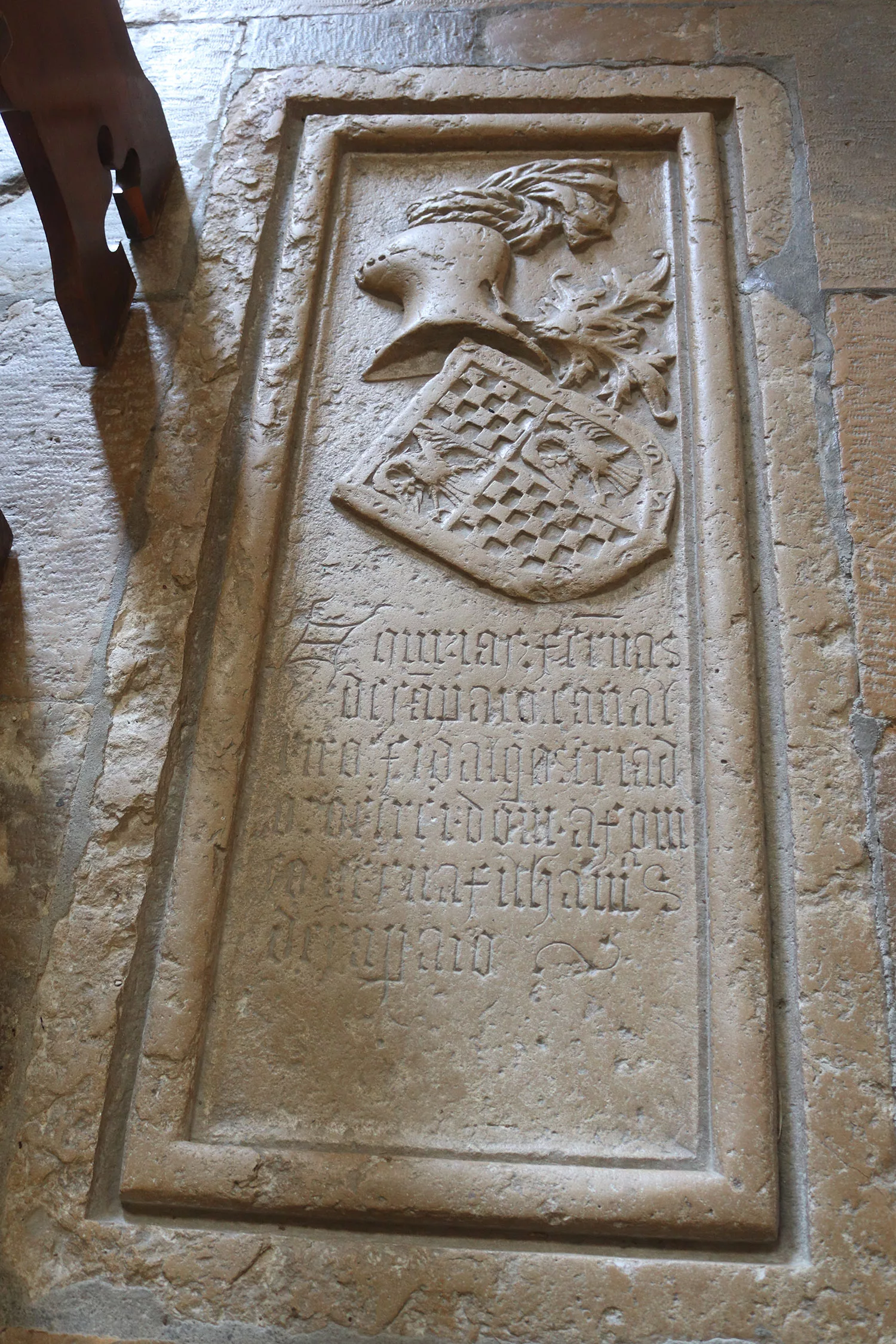
Also be sure to visit the Church of Santa Maria do Olival. It looks a bit simple but dates all the way back to the 13th century (and built off of earlier churches). You’ll see it’s where the Knights Templar of Tomar and then the Knights of the Order of Christ were buried, so it’s very important historically to the town.
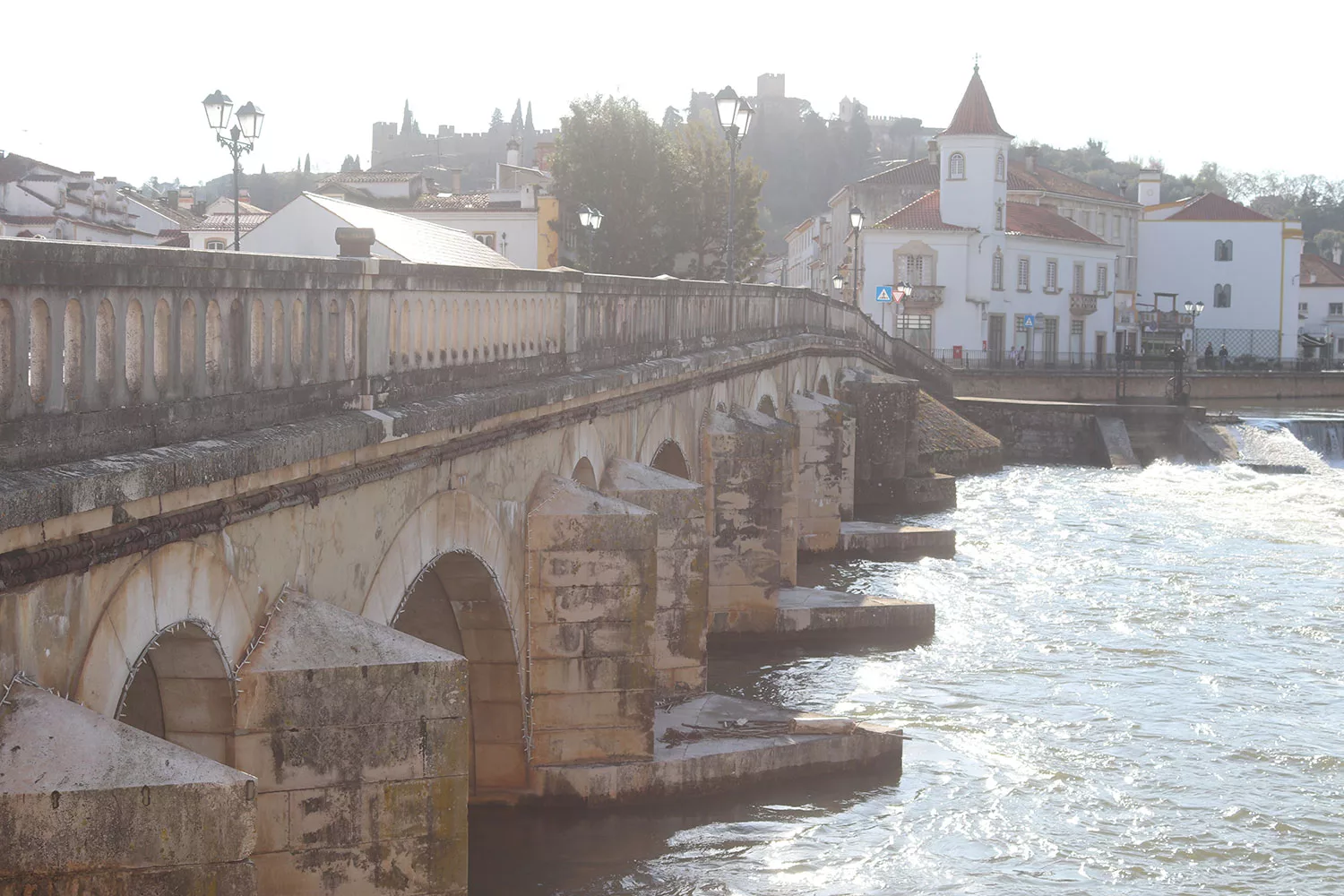
Don’t forget to stop by the Old Bridge, which dates back to the medieval era. Perhaps stop by for a pic before the afternoon so the sun isn’t in the way of your photos! Haha.
There is a Lopes-Graca House Museum which is the birthplace of composer Fernando Lopes-Graca. His life was interesting because not only was he a musical composer but an opposition to the dictatorship that engulfed Portugal for so long. The museum is free but it has a few photos and some furniture, and I wish it had more information on such an interesting person.
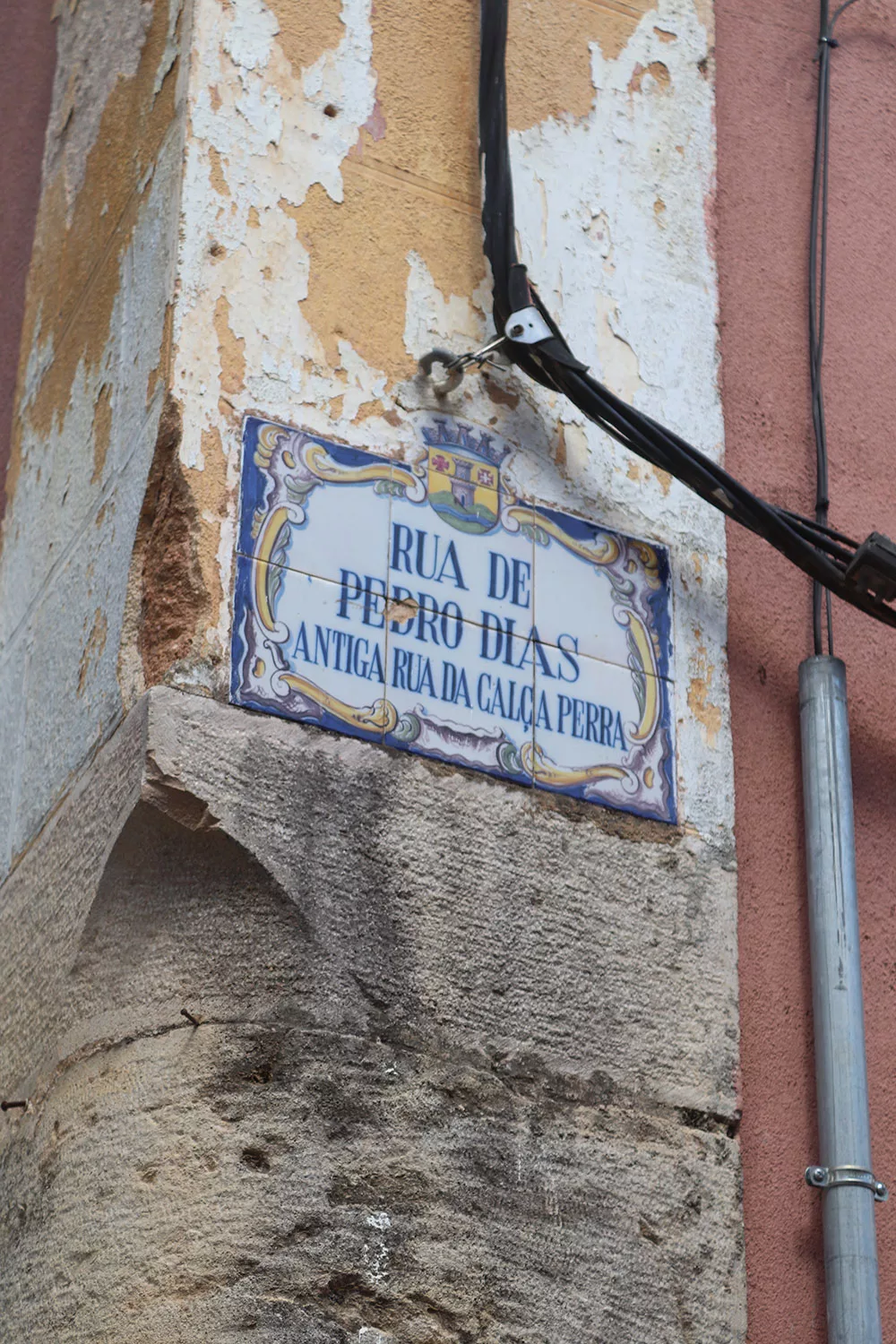
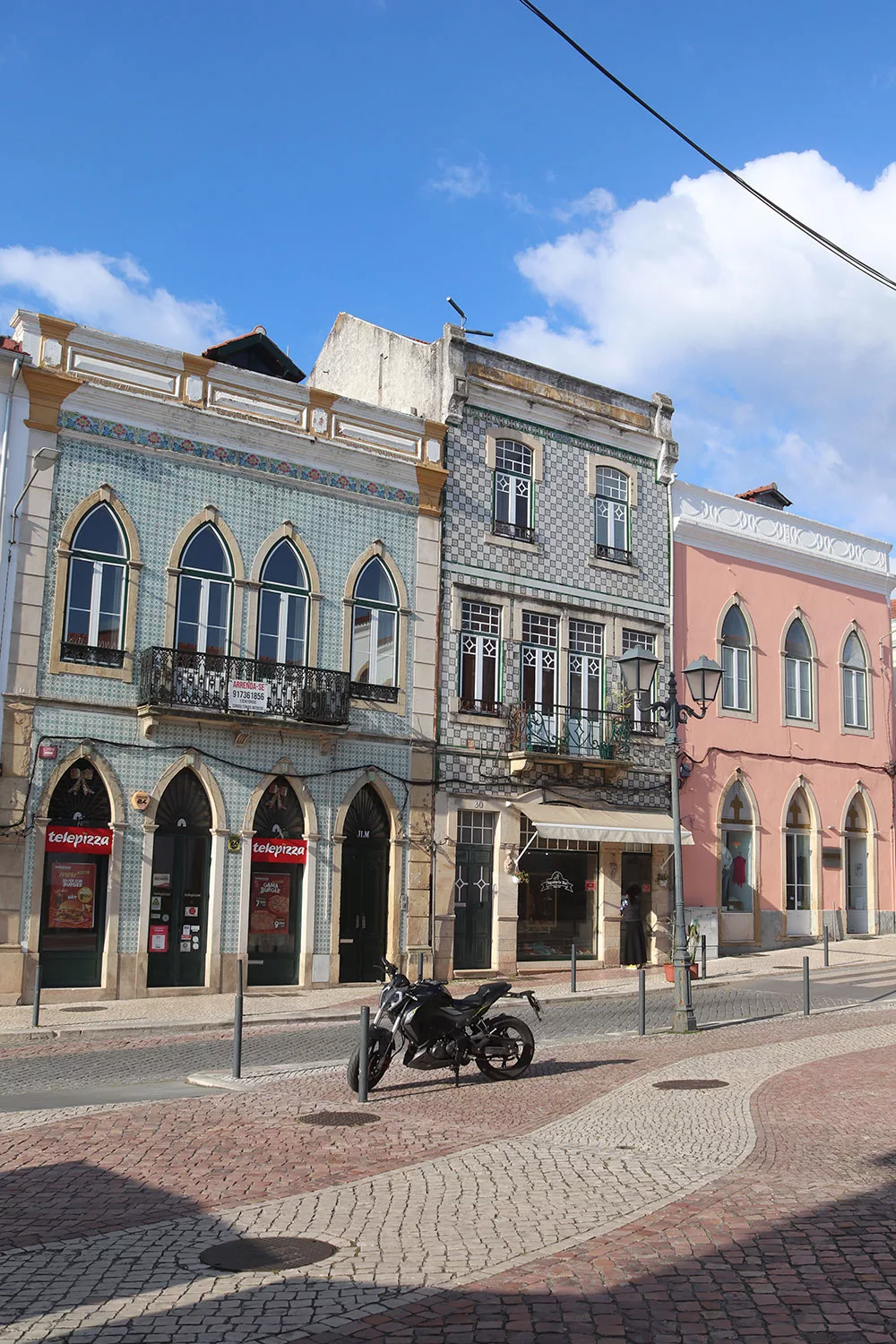
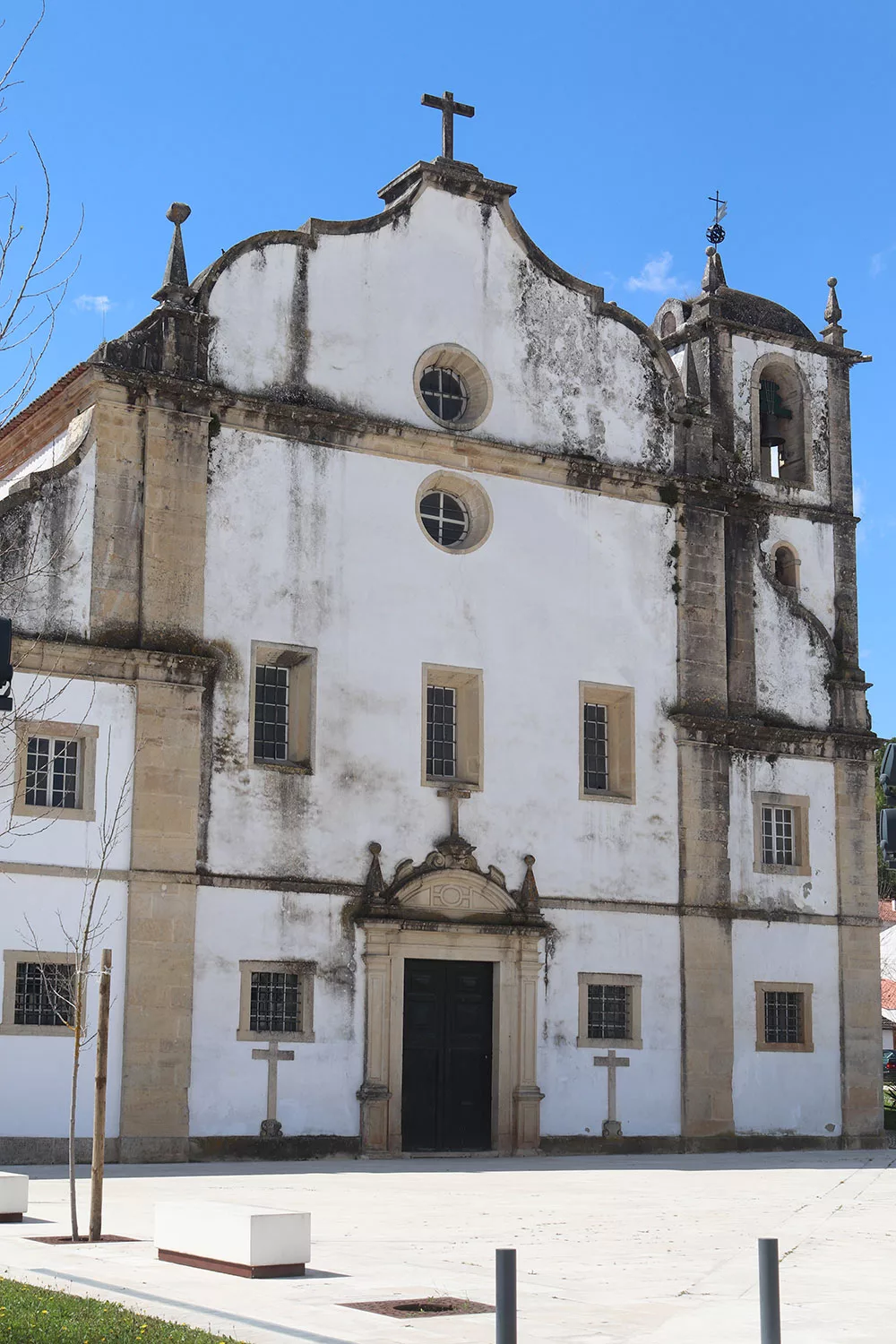
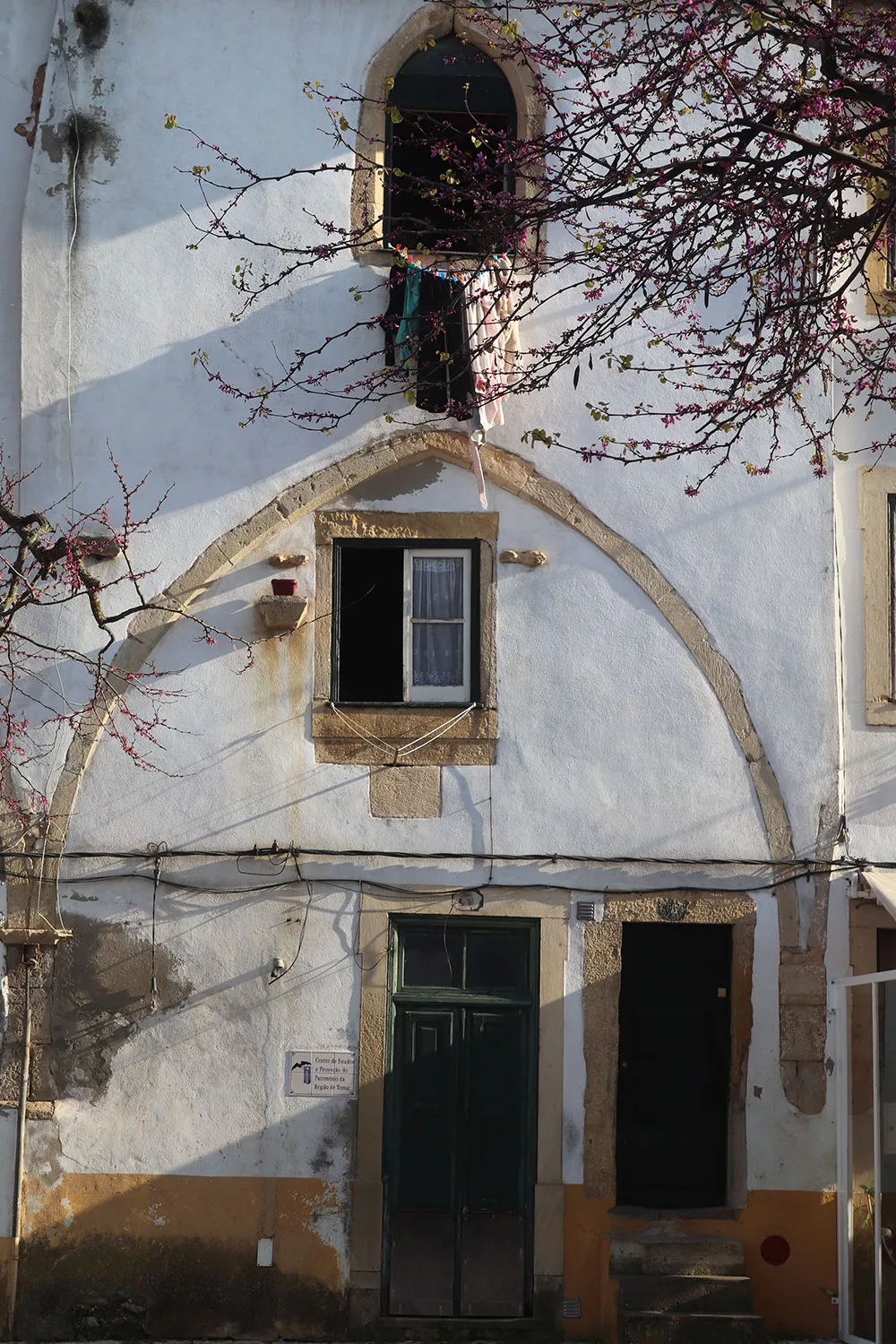
Tomar also has a Roman Forum but unfortunately it is closed off. The signage around it makes it look like it could be coming back as a museum or new experience, but apparently it’s been closed for many years and no update has been given. Would love to see a small museum on a different part of the city’s history.
There’s also a Match Museum in Tomar, but I went by during normal operating hours and it was closed. It seems like a quirky thing to do if you have some extra time. There is also the Lagares del Rei, or old mills, which have apparently been turned into an interpretive center if that’s something that piques your fancy.
Tomar’s Festivals & Festa dos Tabuleiros
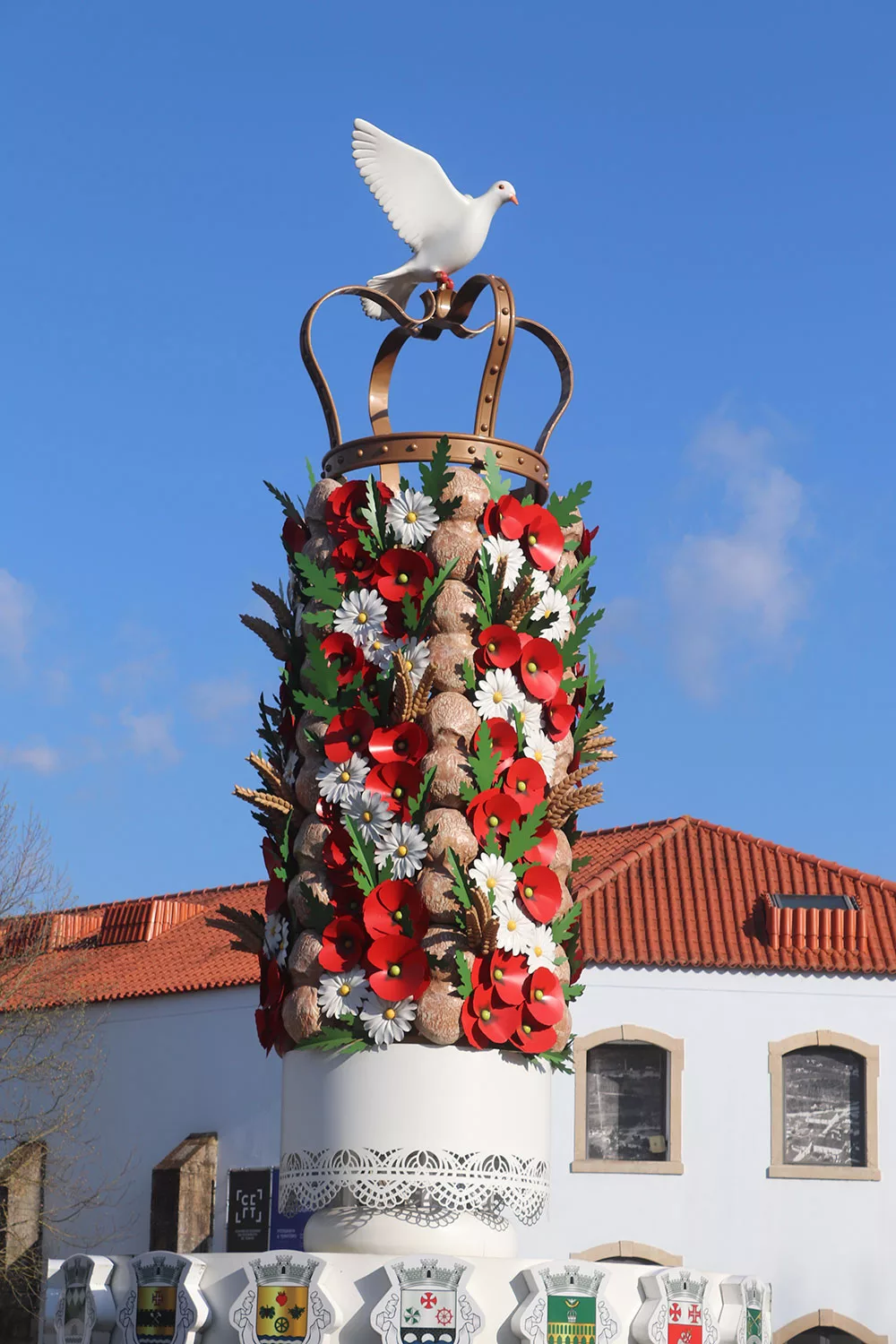
Tomar also has a festival going back to the Order of Christ, and with ancient origins, called the Festival of Trays (Festa dos Tabuleiros). Honestly, I have not been able to find out the exact reason or origin, but it’s said to date back to Queen Isabel de Aragao (the wife of King Dinis) who would hold festivities to raise money for the poor. Today it is tradition. The main event is when girls dress in white and carry trays tall with bread and flowers, and topped with a cross, on their heads.
It’s held every 4 years in July with the next one being in 2027 (2031, 2035, etc.). You can see references to the festival in many parts of Tomar, as well!
There is also another lesser-known Knights Templar Festival that takes place every July.
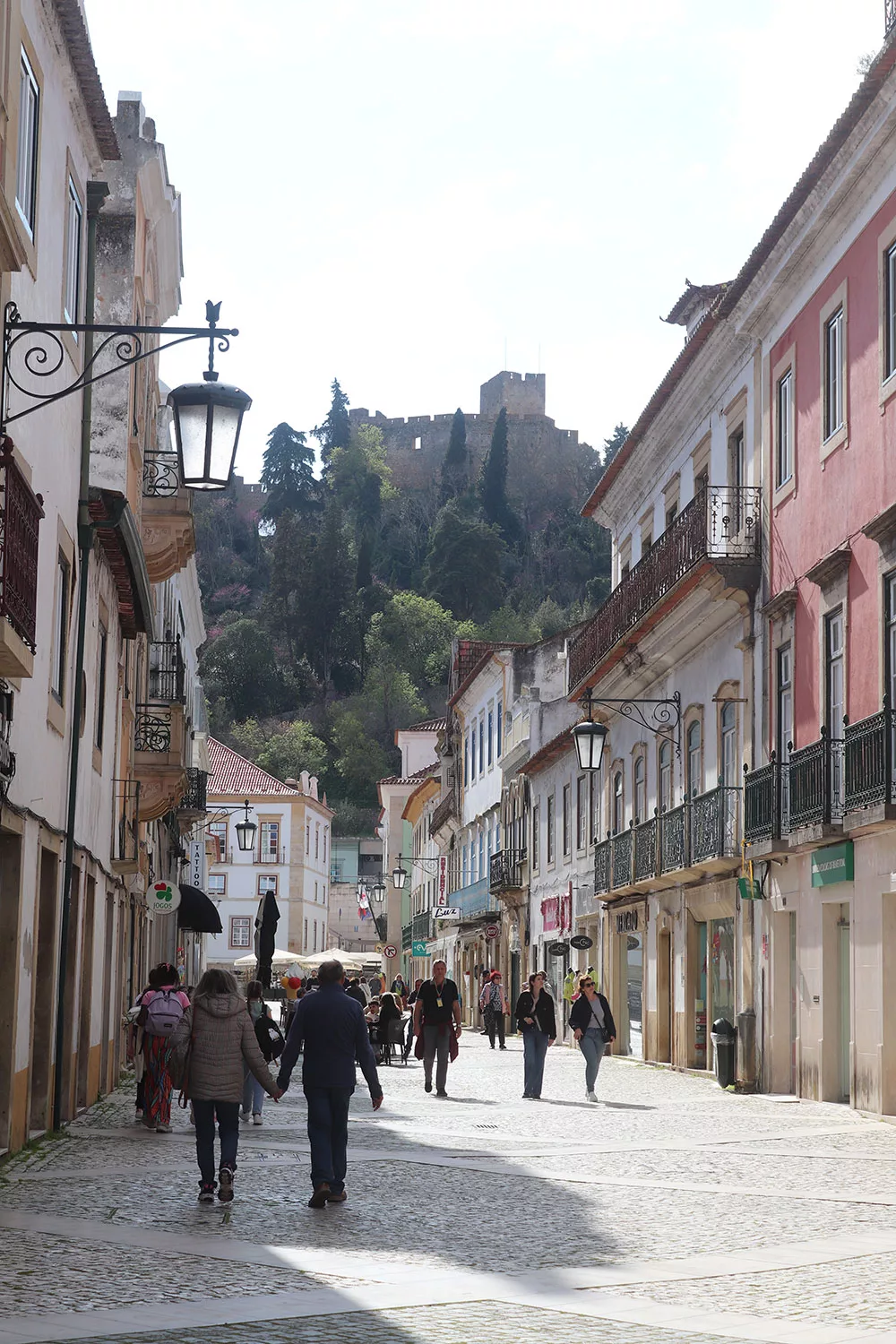
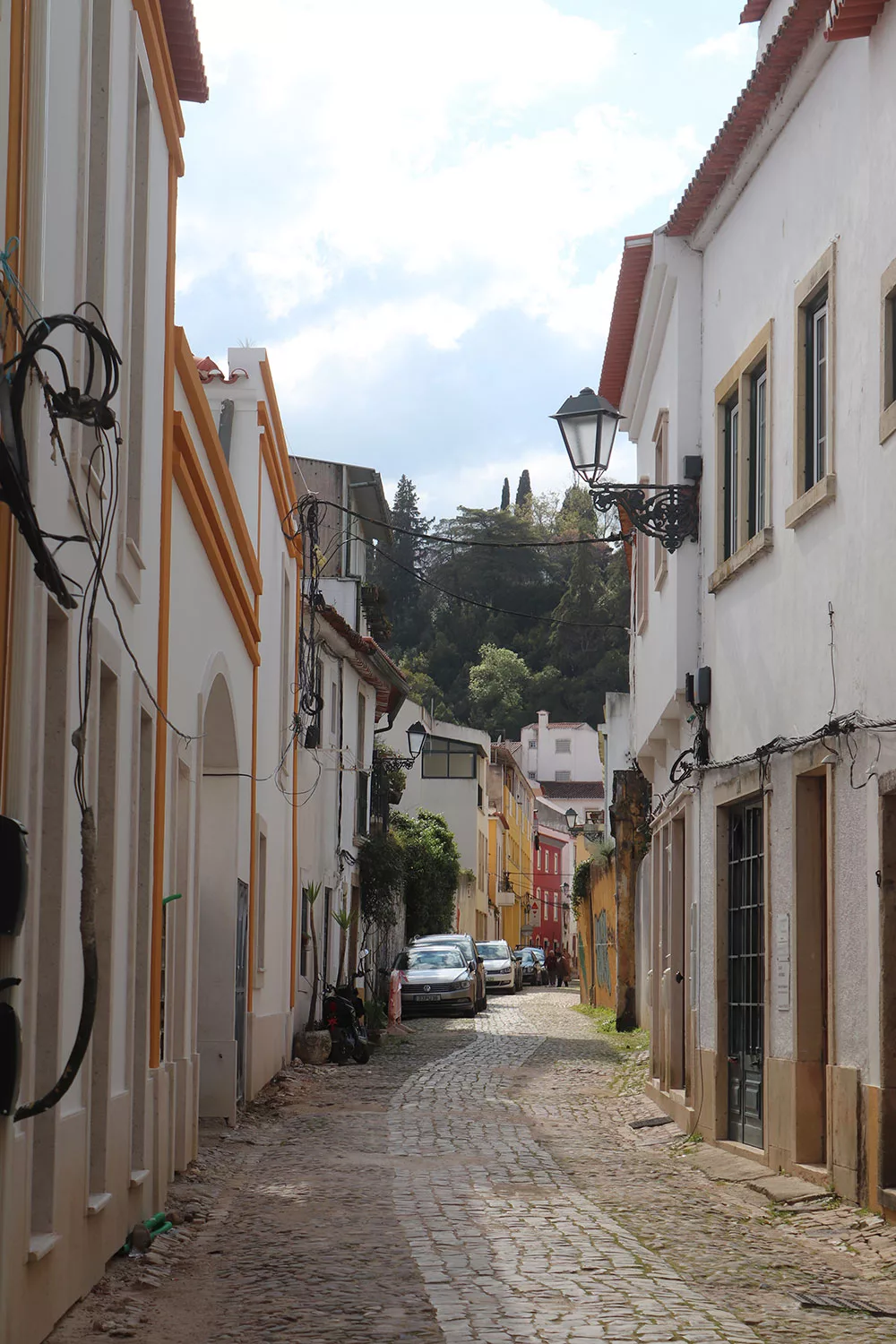
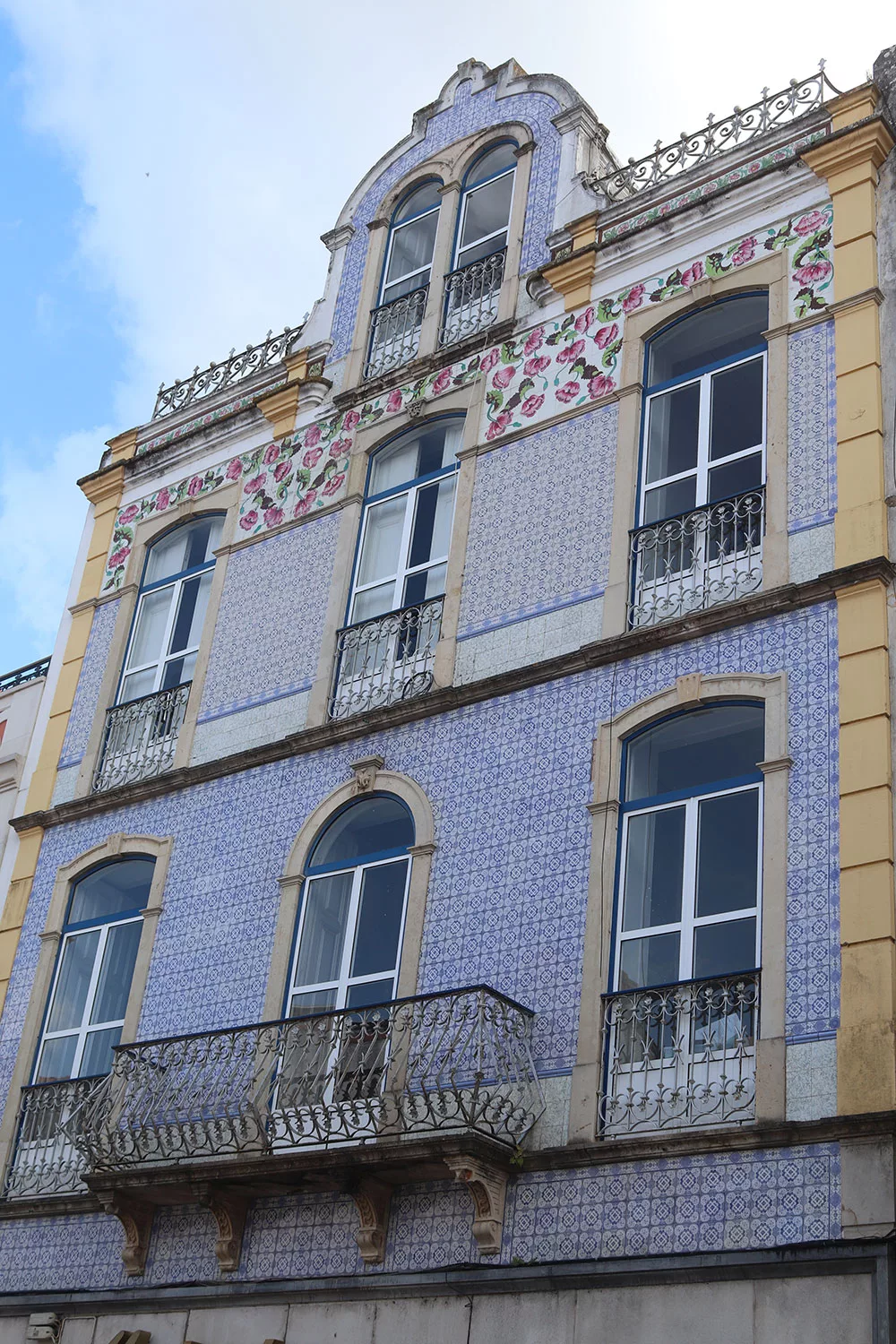

I thought Tomar was quite cute! It wasn’t what I envisioned in a “medieval town” since a lot of the structures are quite newer, but the convent alone made the trip worth it. I also thought it was really cute how much the area celebrates its Templar heritage. There is a very strong presence of culture and history here. A strong personality.
Tomar’s definitely a place to keep on your radar for when you visit Portugal.
Book an Organised Tour
Book Your Stay in Tomar
Need a Book on the Knights Templar?
I’m happy to partner with Bookshop.org to promote sales from independent booksellers.
About the Author
My name's Lilly and I'm a Baltimore-based travel blogger with a focus on art and history. I work full time and manage to get in several trips a year. Learn more about me.Tags: europe, portugal, tomar












